|

|
|
AGENDA
Finance, Audit and Risk Committee Meeting
Tuesday, 12 May 2020
|
|
I hereby give notice that a Finance, Audit and Risk
Committee Meeting will be held on:
|
|
Date:
|
Tuesday, 12 May 2020
|
|
Time:
|
9am
|
|
Location:
|
Tauranga City Council
By video conference
|
|
Please
note that this meeting will be livestreamed and the recording will be
publicly available on Tauranga City Council's website: www.tauranga.govt.nz.
|
|
Marty Grenfell
Chief Executive
|
Terms of reference –
Finance, Audit & Risk Committee
Common
responsibilities and delegations
The following common responsibilities and delegations apply
to all standing committees.
Responsibilities of standing committees
·
Establish priorities and guidance on programmes
relevant to the Role and Scope of the committee.
·
Provide guidance to staff on the development of
investment options to inform the Long Term Plan and Annual Plans.
·
Report to Council on matters of strategic
importance.
·
Recommend to Council investment priorities and
lead Council considerations of relevant strategic and high significance
decisions.
·
Provide guidance to staff on levels of service
relevant to the role and scope of the committee.
·
Establish and participate in relevant task
forces and working groups.
·
Engage in dialogue with strategic partners, such
as Smart Growth partners, to ensure alignment of objectives and implementation
of agreed actions.
- Confirmation of committee minutes.
Delegations to standing committees
·
To make recommendations to Council outside of
the delegated responsibility as agreed by Council relevant to the role and
scope of the Committee.
·
To make all decisions necessary to fulfil the
role and scope of the Committee subject to the delegations/limitations imposed.
·
To develop and consider, receive submissions on
and adopt strategies, policies and plans relevant to the role and scope of the
committee, except where these may only be legally adopted by Council.
·
To consider, consult on, hear and make determinations
on relevant strategies, policies and bylaws (including adoption of drafts),
making recommendations to Council on adoption, rescinding and modification,
where these must be legally adopted by Council,
·
To approve relevant submissions to central government,
its agencies and other bodies beyond any specific delegation to any particular
committee.
·
To appoint a non-voting Tangata Whenua
representative to the Committee.
·
Engage external parties as required.
Terms of reference – Finance, Audit & Risk Committee
Membership
|
Chairperson
|
Mr Bruce
Robertson
|
|
Deputy
chairperson
|
Cr Tina
Salisbury
|
|
Members
|
Mayor
Tenby Powell
Cr Jako
Abrie
Cr Larry
Baldock
Cr Kelvin
Clout
Cr Bill
Grainger
Cr Andrew
Hollis
Cr Heidi
Hughes
Cr Dawn
Kiddie
Cr Steve Morris
|
|
Non-voting
members
|
Tangata
Whenua representative (TBC)
A maximum
of two external appointments may be made by Council on recommendation from
the Committee
|
|
Quorum
|
Half
of the members physically present, where the number of members (including
vacancies) is even; and a majority of the members physically
present, where the number of members (including vacancies) is odd.
|
|
Meeting
frequency
|
Six weekly
|
Role
·
To ensure that Council is delivering on agreed
outcomes.
·
To ensure that Council is managing its finances
in an appropriate manner.
·
To ensure that Council is managing risk in an
appropriate manner.
Scope
·
Monitor financial and non-financial performance
against the approved Long Term Plan and Annual Plan (Note:
Council cannot delegate to a Committee the adoption of the Long Term Plan and
Annual Plan).
·
Oversee the development of the council’s
Annual Report.
·
Oversee the development of financial and
treasury management strategies and policies.
·
Consider and approve external audit arrangements
and receiving Audit reports.
·
Consider the outcome of internal and external
audit reviews.
·
Advise Council on matters of finance and provide
objective advice and recommendations for its consideration.
·
Advise Council on matters of risk and provide
objective advice and recommendations for its consideration.
·
Consider matters which are related to quality
assurance and internal controls in council and ensure the financial management practices
and processes comply with the Local Government Act 2002, other relevant
legislation and Council’s own policies.
·
Consider, monitor and recommend (where
appropriate) in respect to Council’s financial interest in CCOs.
·
Consider all matters regarding the Local
Government Funding Agency (LGFA).
·
Monitor key activities, projects and services
(without operational interference in the services) in order to better inform
the members and the community about key Council activities and issues that
arise in the operational arm of the council.
Power to act
·
To make all decisions necessary to fulfil the
role and scope of the Committee subject to the limitations imposed.
·
To appoint a non-voting Tangata Whenua
representative to the Committee.
·
To establish working parties and forums as
required.
·
For the avoidance of doubt, this Committee has not
been delegated the power to:
o
make a rate;
o
borrow money, or purchase or dispose of assets, other than in
accordance with the Long Term Plan.
Power to recommend
·
To Council and/or any standing committee as it
deems appropriate.
7 Business
7.1 Financial and
Non-Financial Monitoring Report: Period ended 31 March 2020
File Number: A11391870
Author: Kathryn
Sharplin, Manager: Finance
Authoriser: Paul Davidson, General Manager: Corporate Services
Purpose of the Report
1. The purpose of this report is to
inform Council and the public of our financial and service level performance
result for the first nine months of the financial year 2019/20 and provide an
overview of resident perceptions.
|
Recommendations
That the Finance, Audit and Risk Committee:
(a) Receives Report Financial and
Non-Financial Monitoring Report: Period ended 31 March 2020.
|
Executive Summary
2. The full year financial projection
at this stage is for an operating result unfavourable to budget by $5.4m, after
initial analysis of the effect of the COVID-19 response. Net debt at year
end is projected to be $525m, less than the budget of $543m. The main risk to
this projection is timing of capital spend and timing of payments on
weathertight claims.
a) Summary Statement of Comprehensive Revenue and
Expense (Attachment 1) shows both operating expenditure and revenue behind
budget. Revised full year forecasts have been presented showing that the full
year forecast for net operating deficit is $22.4m, $5.4m unfavourable to budget
and $6.8m unfavourable to the deficit forecast at the end of quarter two.
b) The Treasury Report (Attachment 2) shows total net debt to 31 March 2020 of
$480m with the full year forecast of $525m.
c) The TCC Capital expenditure table
(Attachment 3) identifies capital project budgets for the year by significant
projects and other categories of expenditure. At this stage we are projecting
capital delivery to be $48m below budget, noting that the budget includes an
adjustment for non- delivery of $60m.
d) Capital Overspends table (Attachment 3) shows
the projects forecast to be overspent this financial year, which currently
total $24m. $15.2m of this overspend is in relation to a timing
difference in the Waiari programme. A memo to bring forward budget from 2020/21
is in preparation.
3. Attachment 4 presents how Council
and the community are tracking towards achieving Council’s non-financial
performance measures and levels of service.
4. Of the 151 non-financial
performance measures, 124 have been measured and reported on. 73 measures (48%)
are on track with 51 measures (34%) off track and 27 measures (18%) yet to be
measured.
5. Initial analysis of non-financial
performance measures is that of the 51 measures off track, 22 measures have
been affected by the impact of COVID-19. It is also likely that those 22
measures will not be met this financial year.
Background
6. This report is for monitoring and
reporting purposes showing Council’s financial and non-financial
performance in delivering services to the community
7. In a long-term plan (LTP), the
level of service that the council will deliver is agreed upon by the council in
consultation with the public.
8. The Local Government Act 2002
stipulates that local authorities are required to report on how well they are
performing in delivering these levels of service to their communities as
measured by the non-financial performance Indicators.
9. In the 2018-28 Long-term Plan there
were 148 KPIs that were agreed upon (subsequent measures have also been added
to increase total to 151 via this committee, no levels of services have been
changed), 23 of which are mandatory measures as per section 261B of the Local
Government Act.
10. The budget to achieve the agreed level of
service is set in the LTP. Rates are set based on the agreed budget.
Strategic Context
11. Maintaining expenditure within budget ensures
delivery of services in a financially sustainable way.
12. Monitoring non-financial performance is a key
function of the committee.
DISCUSSION
Part 1: Financial Performance
13. Attachments to this report provide a summary
of Council’s financial performance for the year to date. The content of
this report includes:
(a) A summary of revenue and expenditure
year to date with revised full year projections presented as a Statement of
Comprehensive Revenue and Expense (Attachment 1).
(b) The Treasury report which shows
borrowing year to date and full year projections, the average cost of funds and
money market investments benchmarked to average return (Attachment 2).
(c) The Capital Programme spend to date and
full year projections, also identifying key projects (Attachment 3).
14. Forecasting to the end of the 2019/20 financial
year (and into 2020/21) has been a focus since the beginning of COVID-19 Level
4 lockdown. The results of that work to date are included in the attachments to
this report on operational and capital expenditure including forecasts, noting
that the environment is very fast moving with assumptions changing frequently
as new or updated information is received.
15. Updates on projections, based on the effects
of the COVID-19 response, will be included in the fortnightly Financial Update
– COVID 19 report for this committee.
16. The Statement of Comprehensive Revenue and
Expenditure shows the operating and capital revenue and expenses in a format
consistent with the Annual Report. It shows the year to date results for
revenue and expenditure and provides a full year forecast.
17. Operating revenue is now projected to be
unfavourable to budget for the year by $11m. The largest variances between
forecast and budget are as follows:
|
Activity
|
Variance
|
Comment
|
|
Airport
|
$(1.6)m
|
Lower than expected landing revenue
exacerbated by COVID-19 response.
|
|
Water Supply
|
$(1.8)m
|
Forestry harvesting revenue (from the
Oropi water catchment) deferred due to low prices and community consultation
timeframes.
|
|
Parking
|
$(4.1)m
|
Forecasting little parking revenue for
the remainder of the year; delayed opening of Harington Street carpark
building; casual parking fees behind budget YTD.
|
|
Environmental Planning
|
$(0.7)m
|
Lower than budgeted consent numbers and
starting to see the impact of reduced residential consents due to restricted
land supply.
|
|
Building Services
|
$(1.3m)
|
Lower numbers of code of compliance
applications and reduced charging of swimming pool inspections.
|
18. Operating cost variances are favourable
primarily due to lower depreciation on three waters infrastructure arising from
last year’s asset revaluation which extended the useful life of some of
our plant. Personnel expenses are $1.1m behind budget reflecting vacant
positions across the business including Building Services and Environmental
Planning. Due to these vacancies, contractor costs are running over budget.
19. The Treasury Report (Attachment 2) shows total
net debt to 31 March of $480m with the full year forecast at $525m (against a
full year budget of $543m). The lower expenditure on capital more
than offsets lower revenue, including operating and capital revenue resulting in the lower forecast debt position.
20. TCC Capital Expenditure (Attachment 3)
summarises expenditure on the capital programme, identifying significant
capital projects. The capital programme is tracking behind budget by $74m year
to date which is 51% spent with 75% of the year gone. Project delivery
usually increases in later months however the impact of COVID-19 on capital
expenditure is forecast to be substantial and we continue to refine these
forecasts. At the time of writing, the forecast is $48m less than budget. For
the most part, this variance can be considered a delay, or timing difference.
We would therefore expect the unspent budget to be carried forward to 2020/21.
(Note the capital budget at $203m includes a $60m underspend assumption).
21. The Capital Overspends table (Attachment 3)
identifies project overspends for the year totalling $24m. The largest of
these relates to the Waiari water supply programme of works and is a timing
difference for which approval to bring forward budget from 2020/21 will be sought.
Part 3: Non-Financial Performance Measures
22. Attachment 4 presents how Council and the
community are tracking towards achieving Council’s non-financial
performance measures and levels of service.
23. Of the 151 non-financial performance measures (four
measures were added in as part of the recommendation when this was last
reported in November 2019), 124 have been measured and
reported on. Data is not yet available for 27 measures.
24. Of those that have been measured, 73 measures
(48%) are on track with 51 measures (34%) off track.
25. Of the 51 measures off track, 22 measures have
been affected by the impact of COVID-19. It is also likely that these measures
will now not be met this financial year.
26. Where data is not available, the majority
relate to annual measures which are only surveyed at one point through the year
or to measures that have no current method of assessment.
Perceptions Monitor
27. The Annual Residents’ Survey supports
non-financial reporting by measuring the perceptions of residents regarding
various aspects of services that Council provides.
28. Each
wave's mail out quotas are applied according to age, gender and ward, to ensure
that a representative sample of Tauranga City’s population is achieved.
The data is weighted to account for variances in the achieved quotas and to
ensure that the sample reflects the population profile achieved.
29. The
overall results have an anticipated margin of error of +/- 4.6% at the 95%
confidence level. Scores for 2018/19 and 2019/20 reporting periods exclude
'Don't know' responses.
30. The
results for 2019/20 wave 2 are interim and based on the sample of n=180. Data
collection has taken place between 10 Feb and 16 March 2020.
31. A summary of the highlights of the second wave
are attached at Attachment 5. The summary helps provide an insight into
how different elements of Council’s core service deliverables, reputation
and the perception of value for money contribute to respondents’
perception of Council’s overall performance.
32. The level of satisfaction (reputation
measure) with Tauranga City Council in general has decreased from 66% in
2018/19 to 47% year-to-date. Reputation measures the community’s
perception of four key areas – leadership, acting honesty/fairly,
financial management and quality of services/facilities.
33. Perceptions of each of the three
drivers of overall performance have decreased:
a. The
perception of value for money, which is the major driver of the overall
perception score, has dropped from 50% to 41% year to date. This has been
driven by a decline in the perception that annual property rates are fair and
reasonable.
b. The
second biggest driver, overall service and facilities, decreased from 72% to
64% year-to-date.
c. Reputation
has dropped from 46% in 2018/19 to 35% year-to-date.
34. The
final wave will be due to be reported in August with the draft annual report.
OPTIONS
35. There
are no options associated with this report. The report is provided as
information only.
Significance
36. Under the Significance and Engagement Policy
2014, the decision to receive this report is of low significance. The
decisions to approve the capital overspends are also of low significance as the
size of the overspends do not reach a higher threshold.
Next Steps
37. This report ensures monitoring of Council
performance to ensure compliance with Council’s budgets, policies and
delegations.
Attachments
1. Statement
of Comprehensive Revenue and Expenditure - A11437048 ⇩ 
2. Treasury
Overview - A11437050 ⇩ 
3. Capital
Programme - A11437045 ⇩ 
4. Non-Financial
Performance Measures - Q3 2020 - A11411310 ⇩ 
5. Tauranga
City Council Dashboard 2019/20 Wave 2 Summary - A11411294 ⇩ 
|
Finance, Audit
and Risk Committee Meeting Agenda
|
12 May 2020
|






|
Finance, Audit and Risk Committee
Meeting Agenda
|
12 May 2020
|

|
Finance, Audit
and Risk Committee Meeting Agenda
|
12 May 2020
|




|
Finance, Audit
and Risk Committee Meeting Agenda
|
12 May 2020
|


























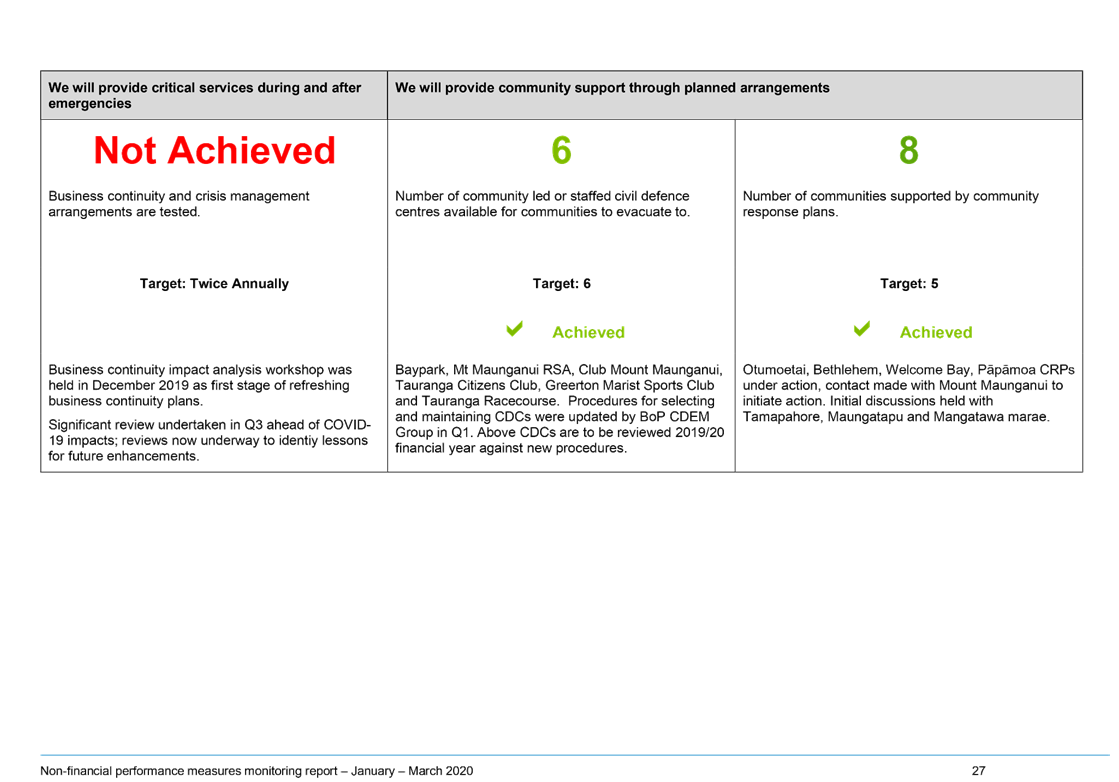
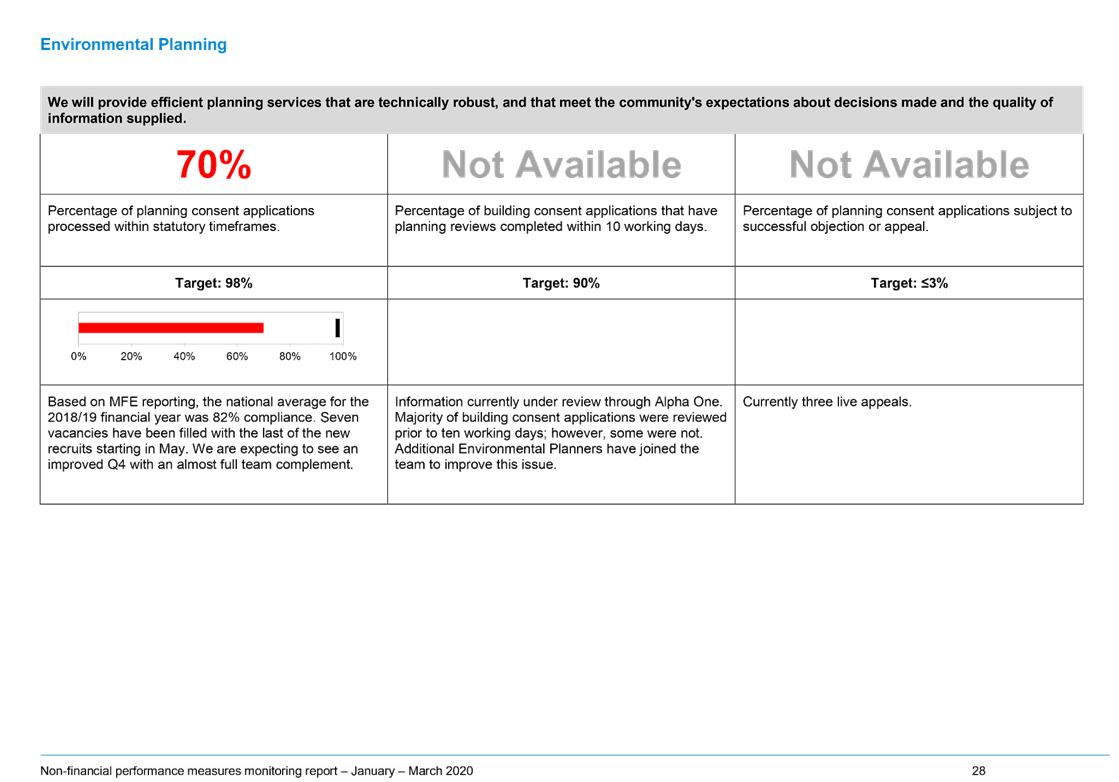









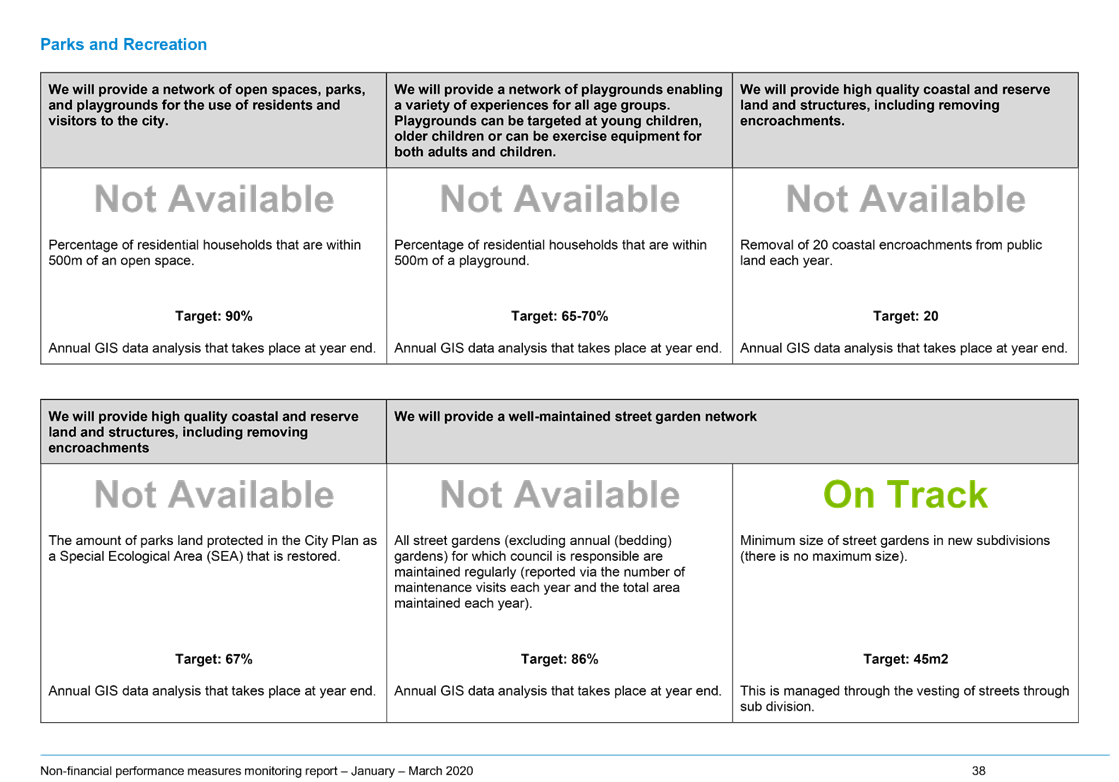
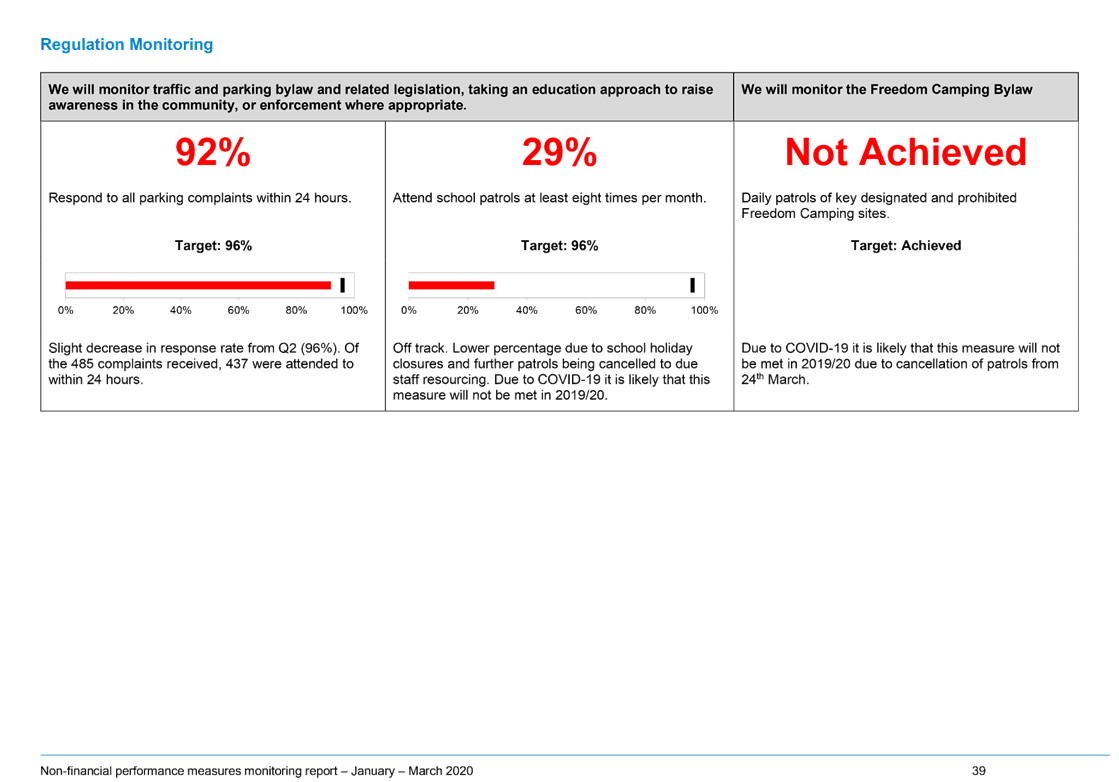

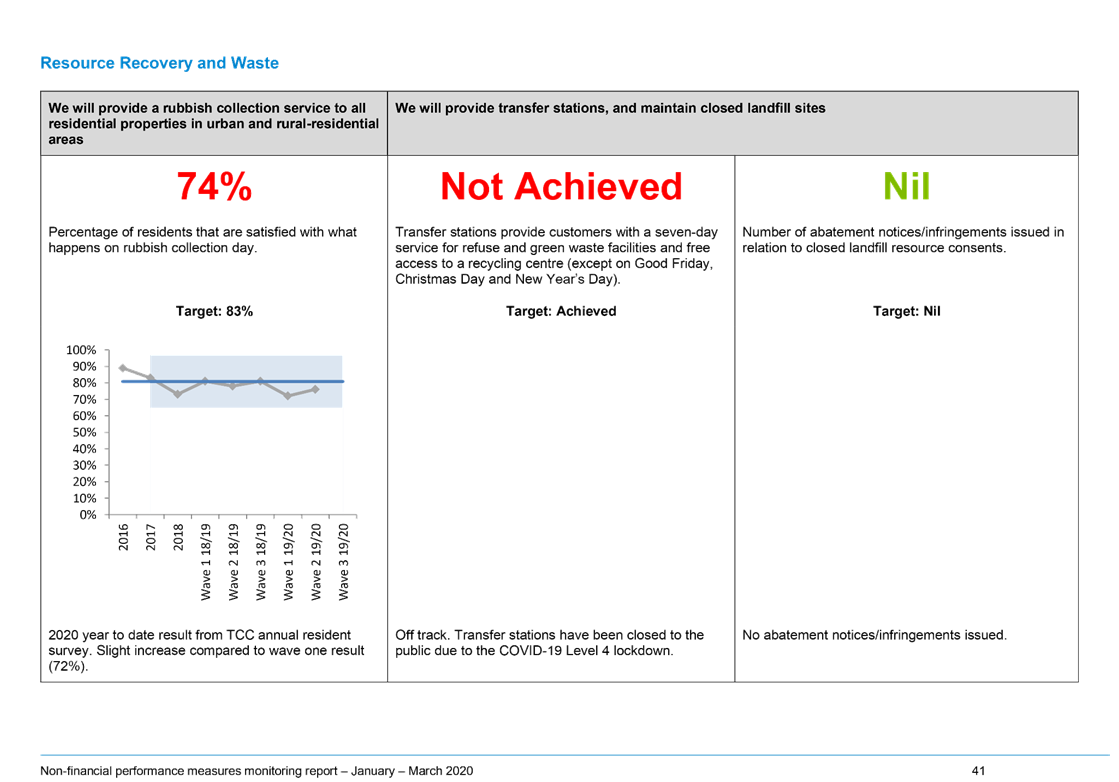
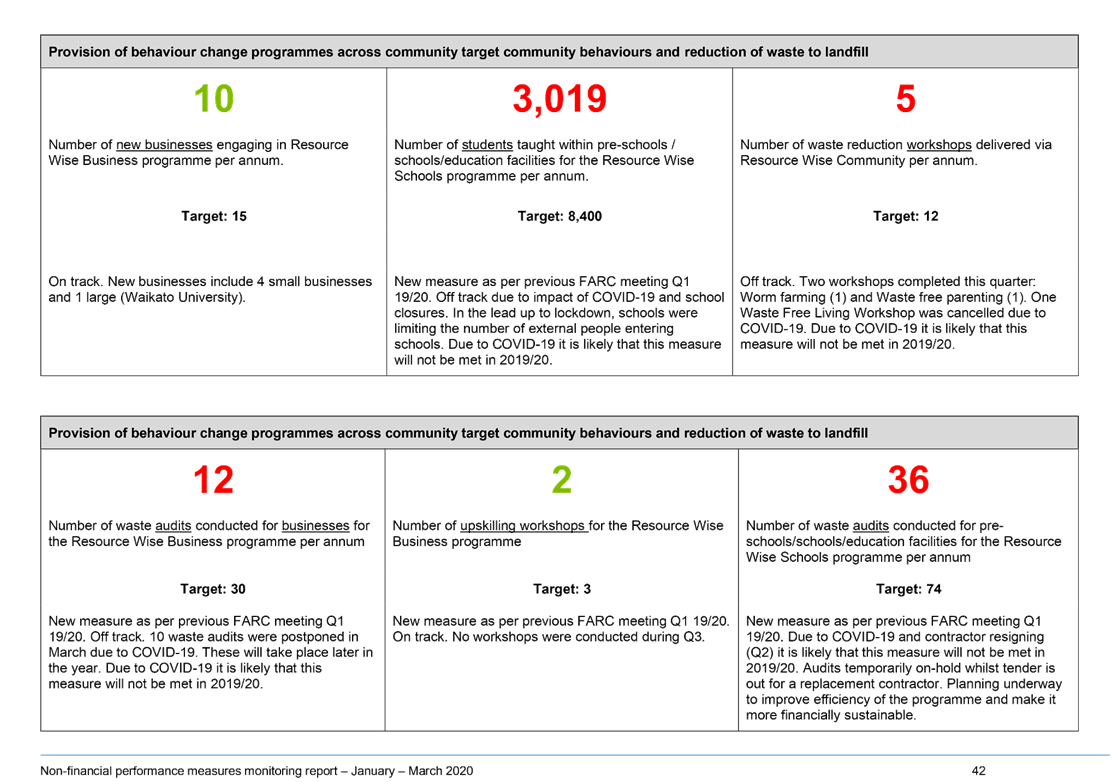
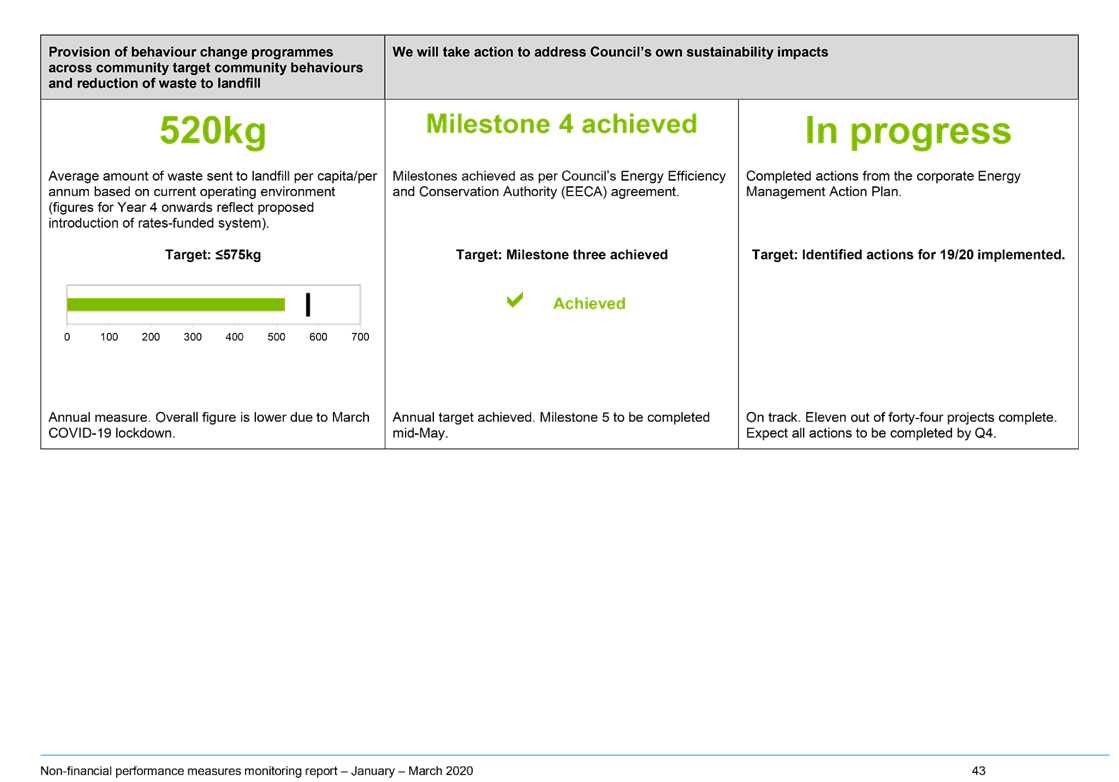
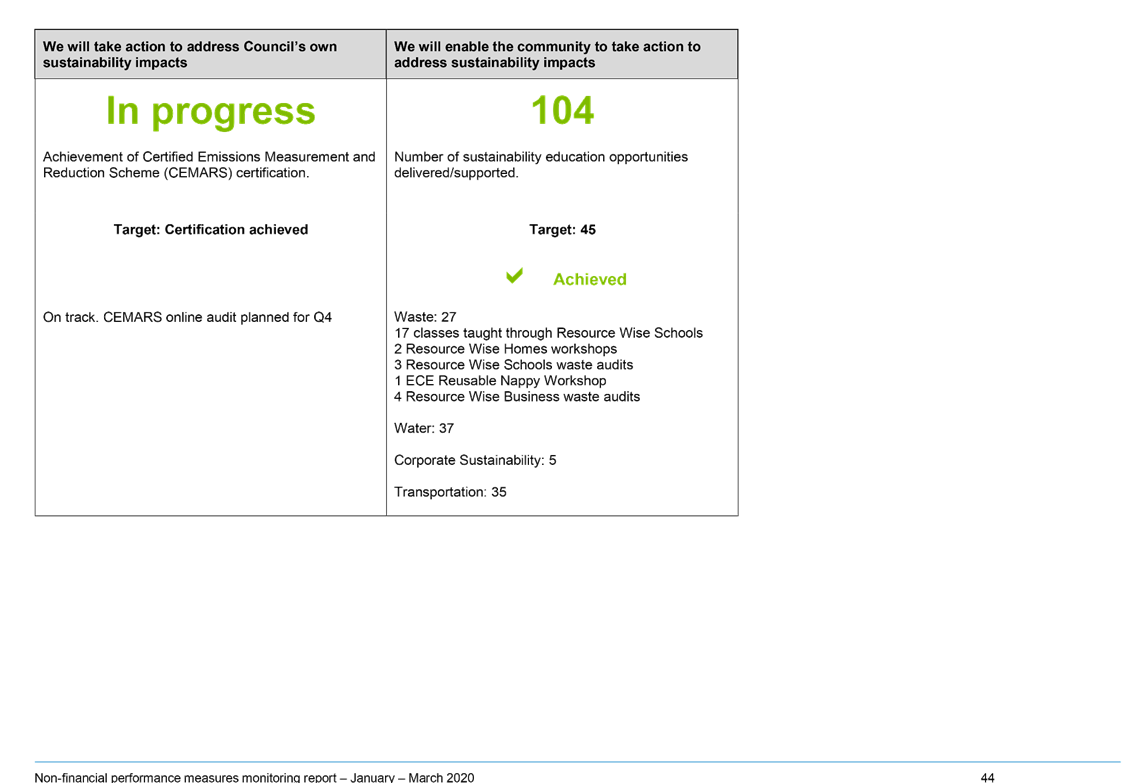
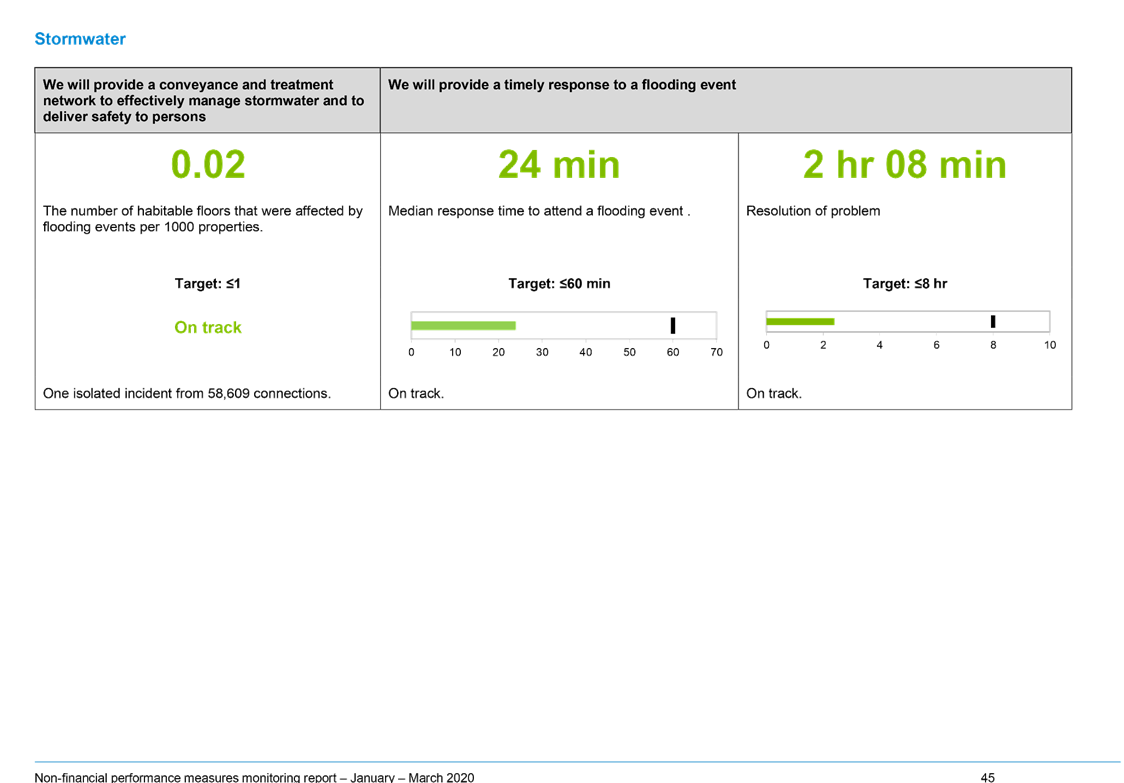
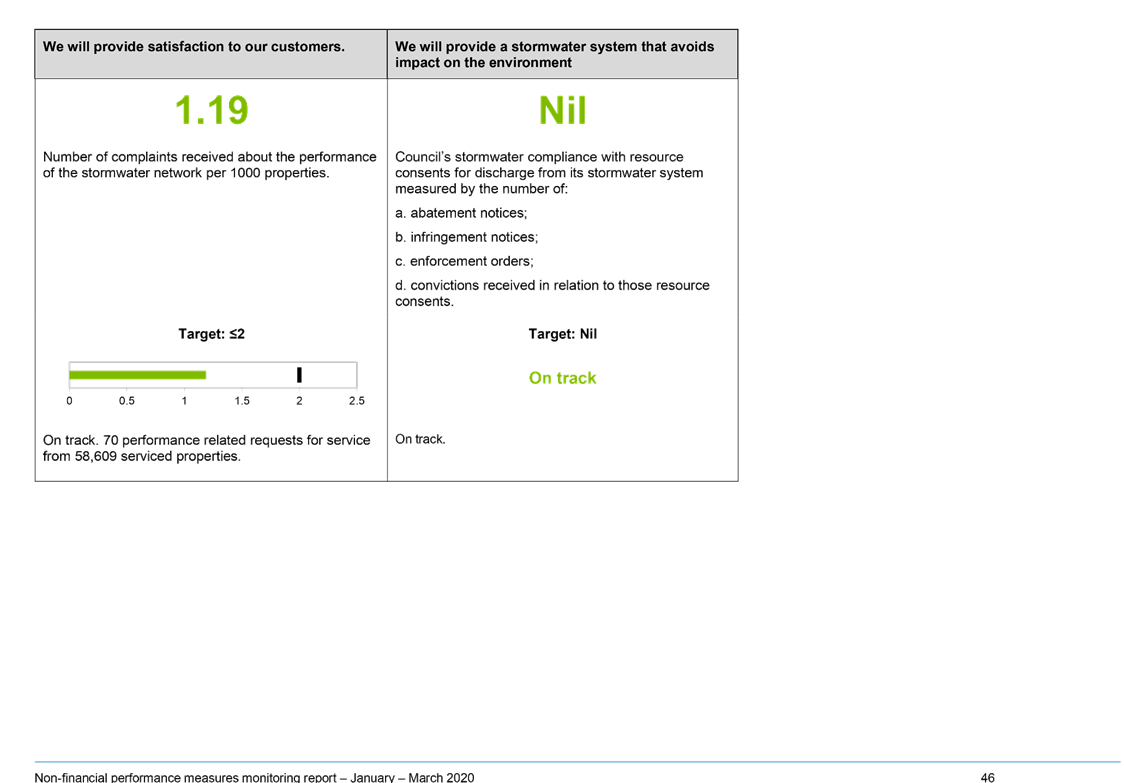
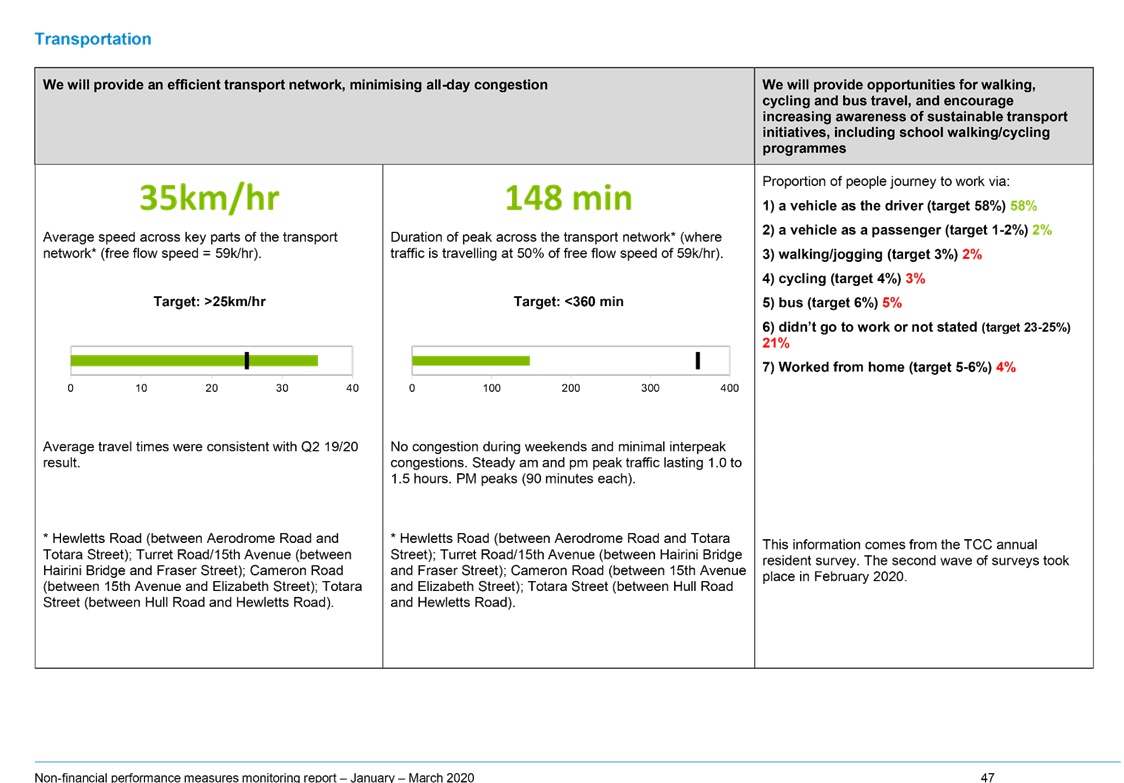
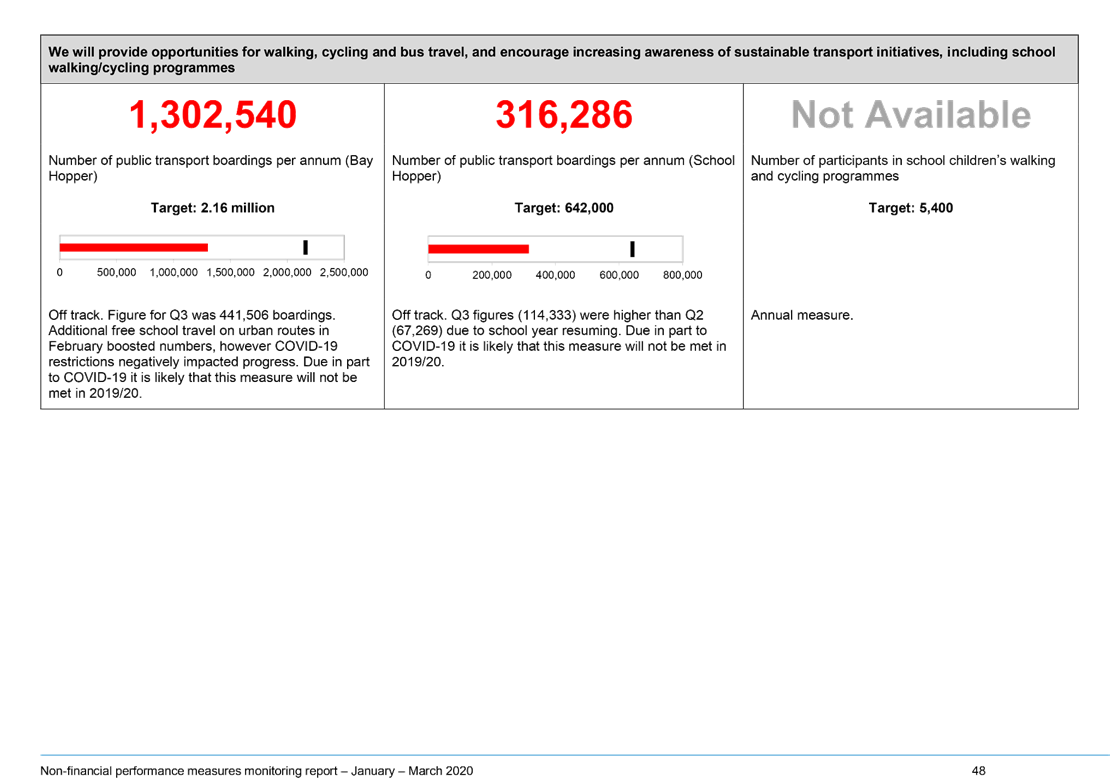
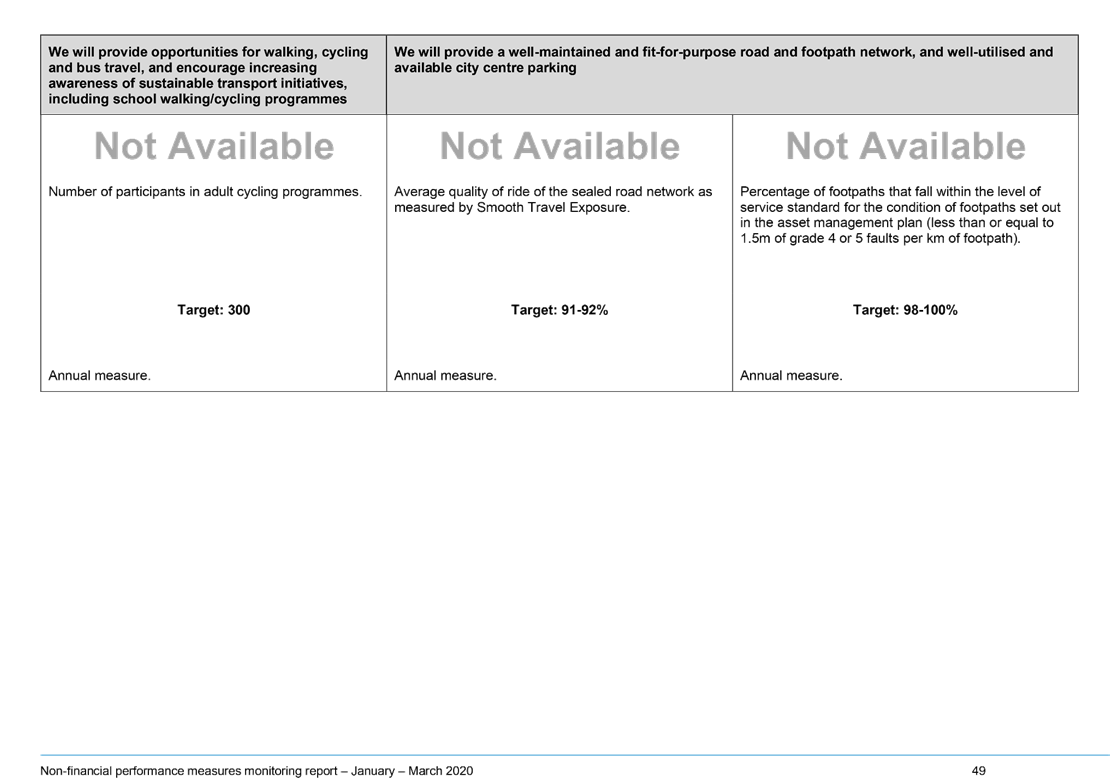
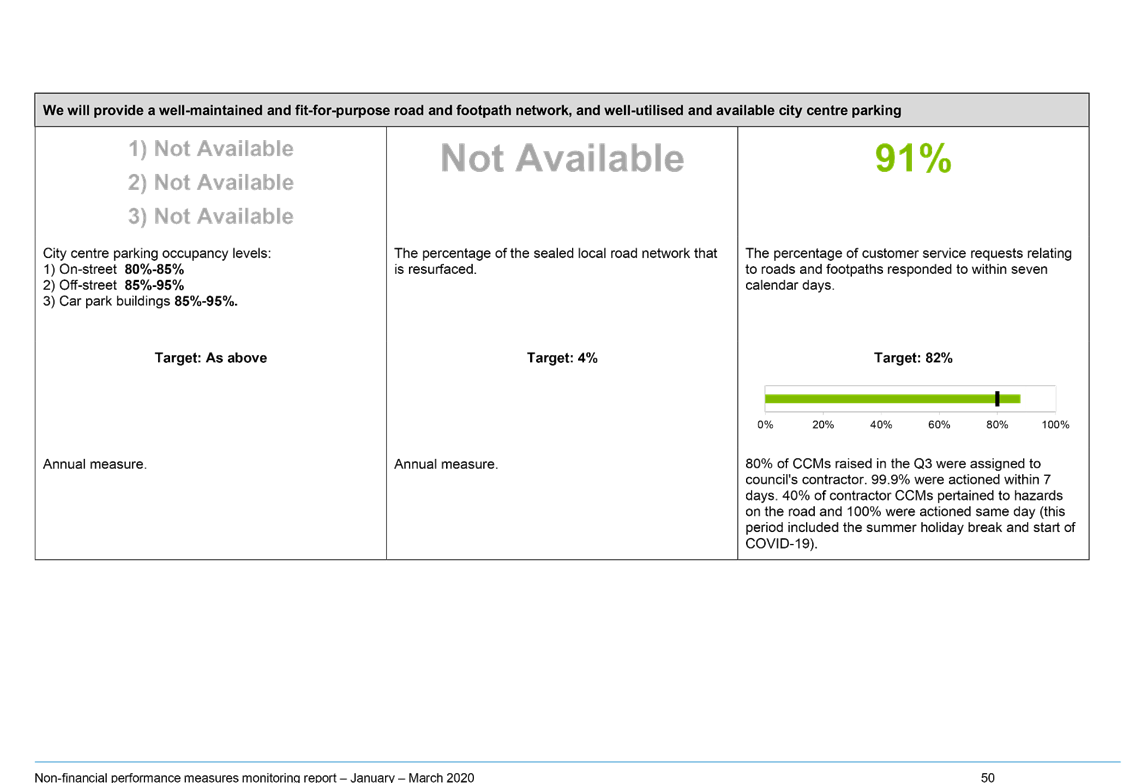

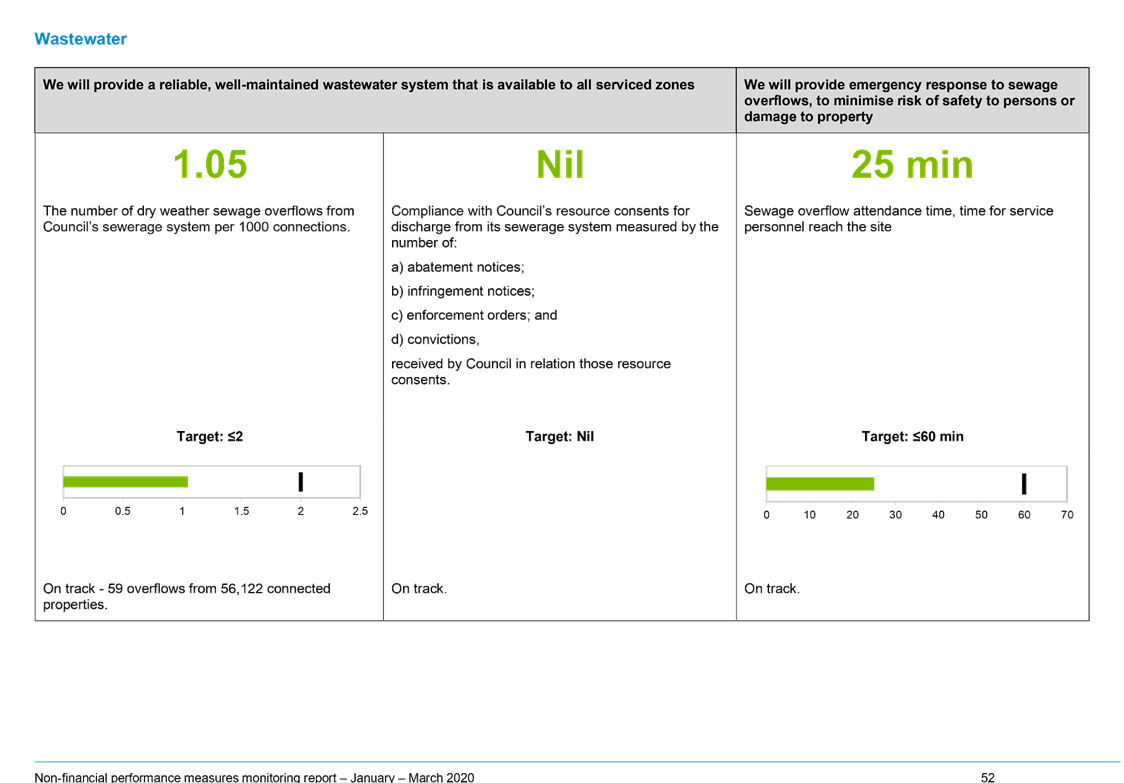
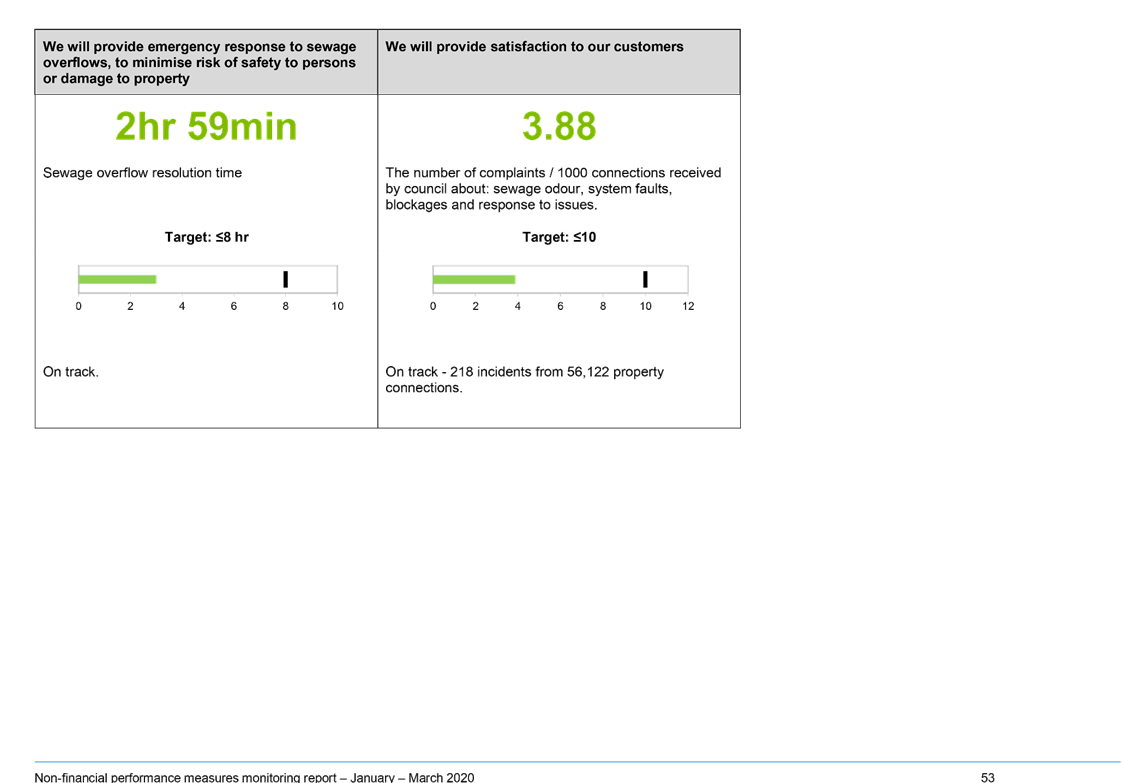
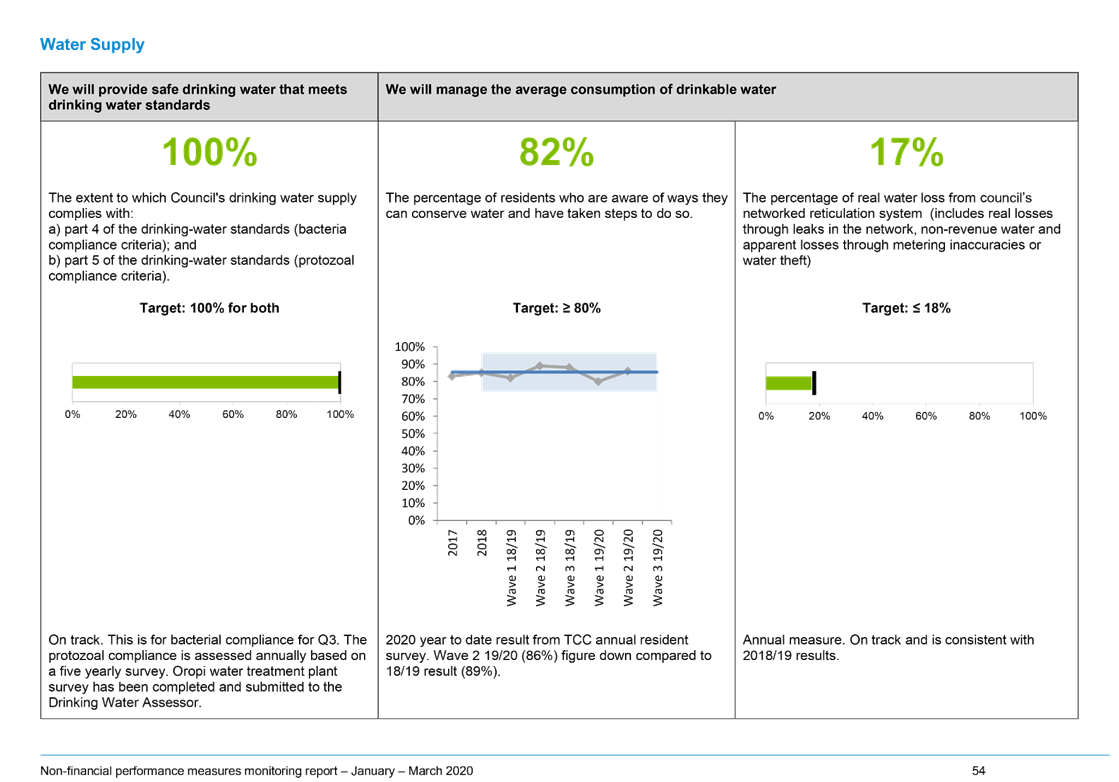
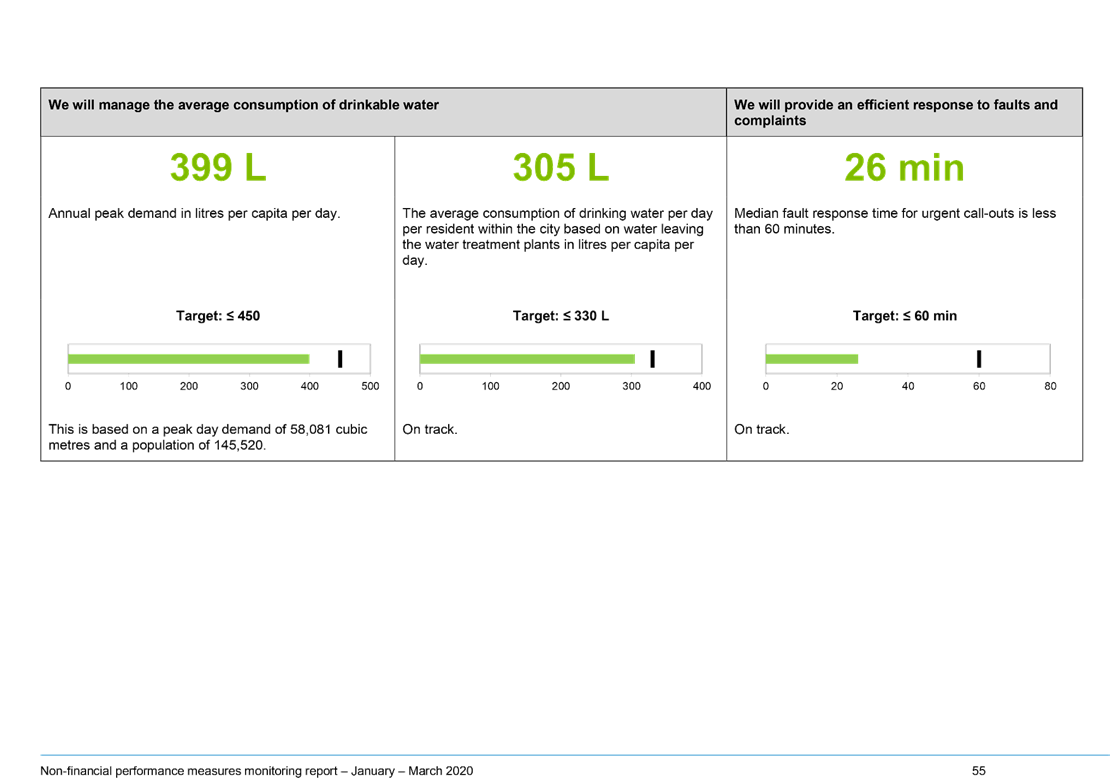
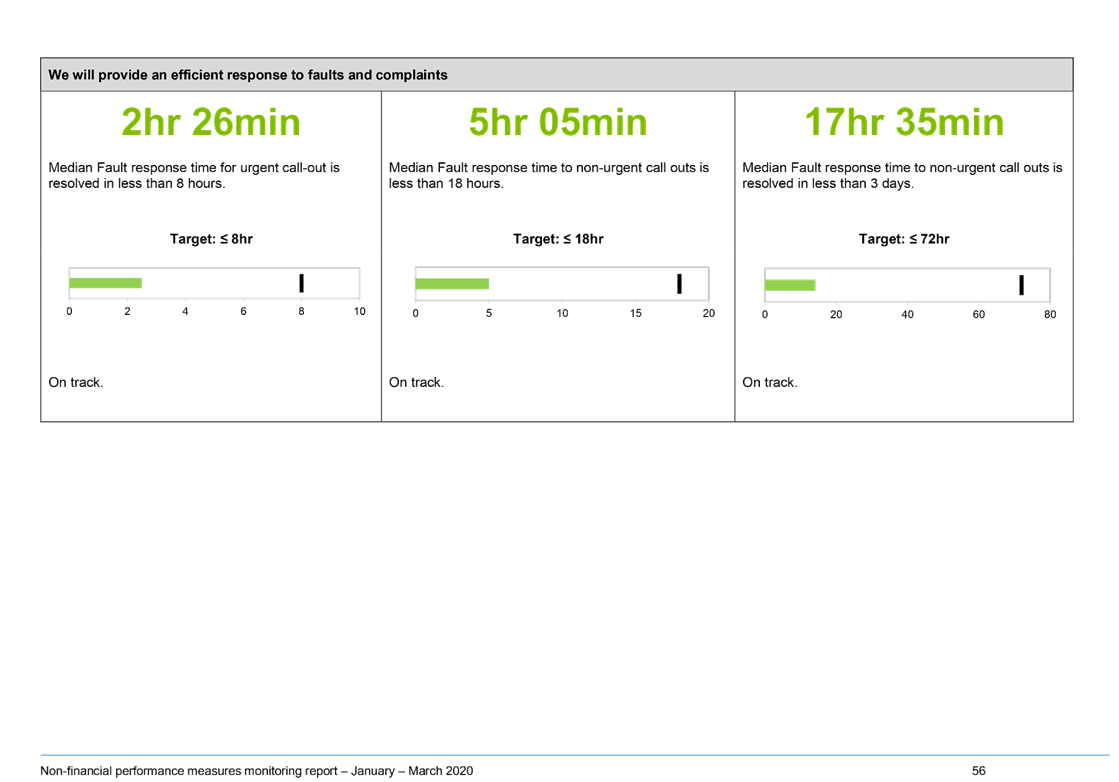
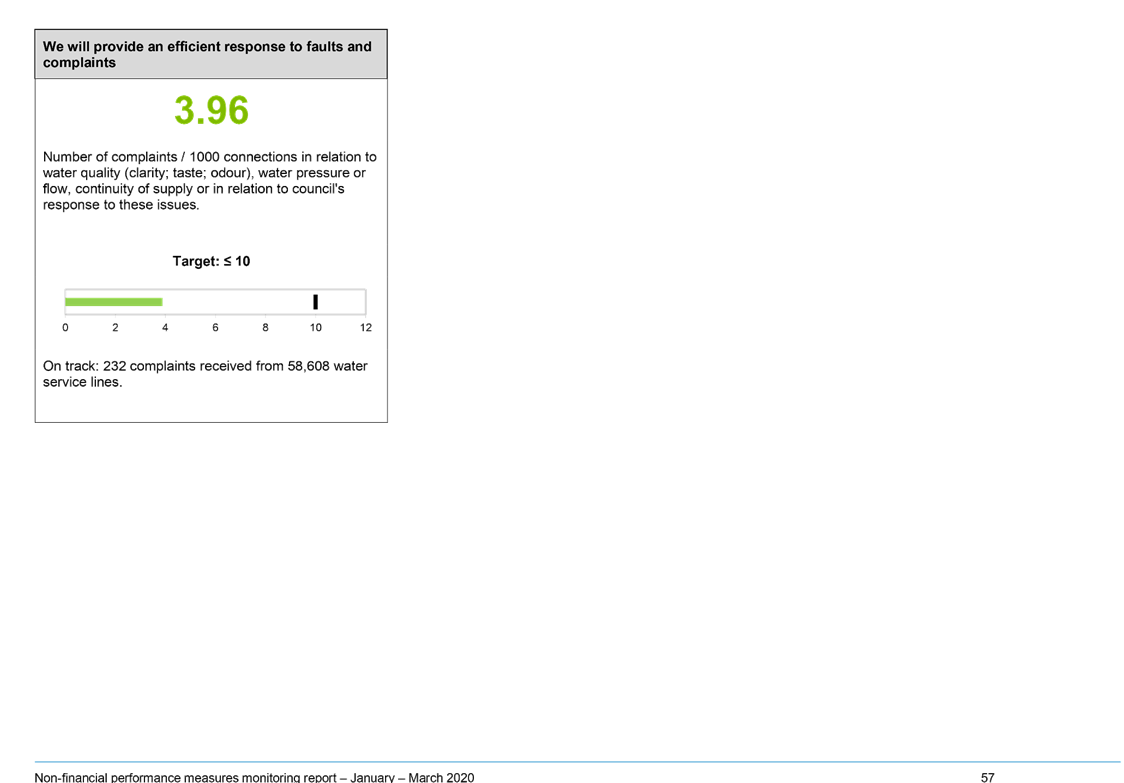
|
Finance, Audit and Risk Committee Meeting
Agenda
|
12 May 2020
|
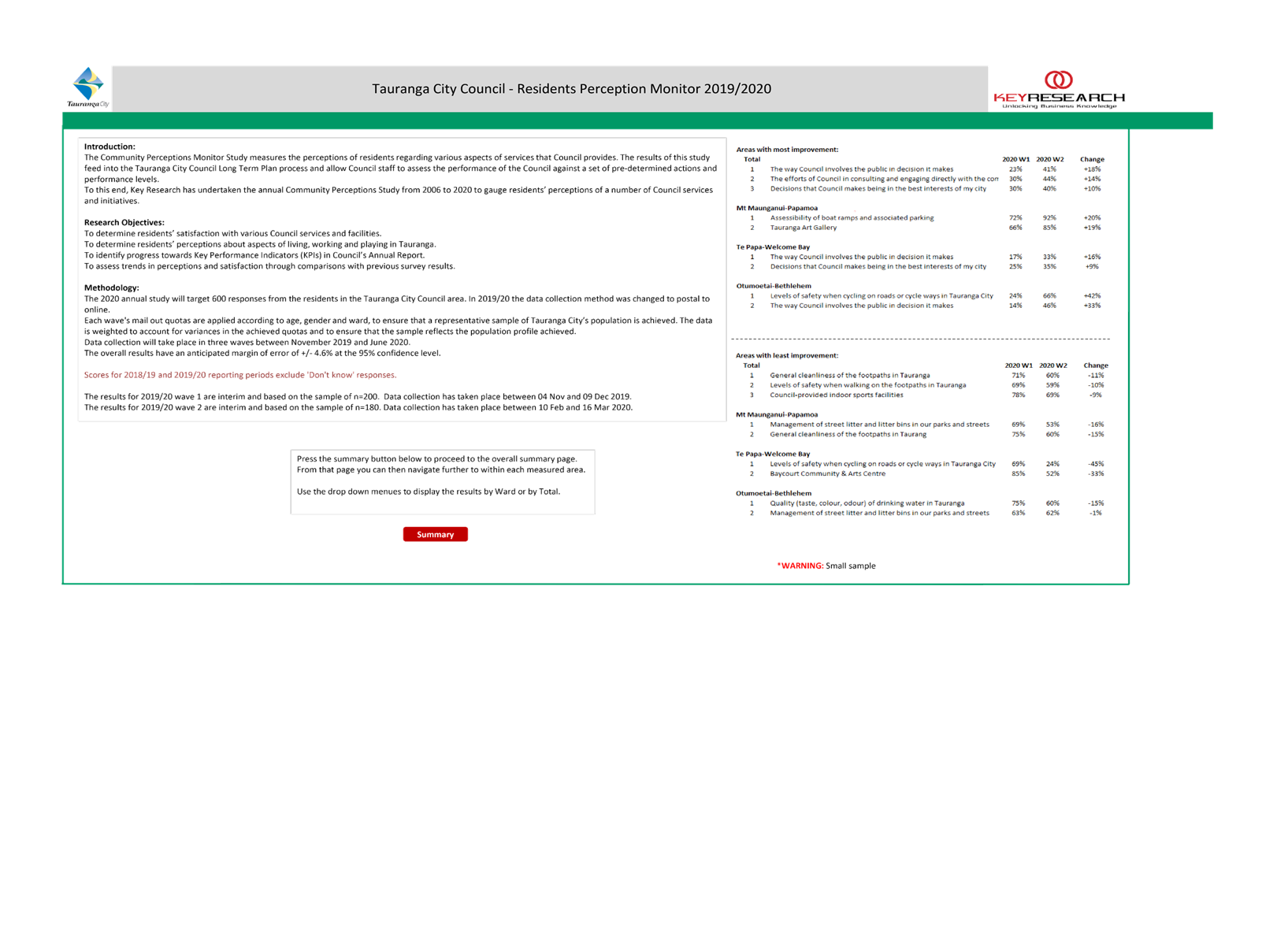
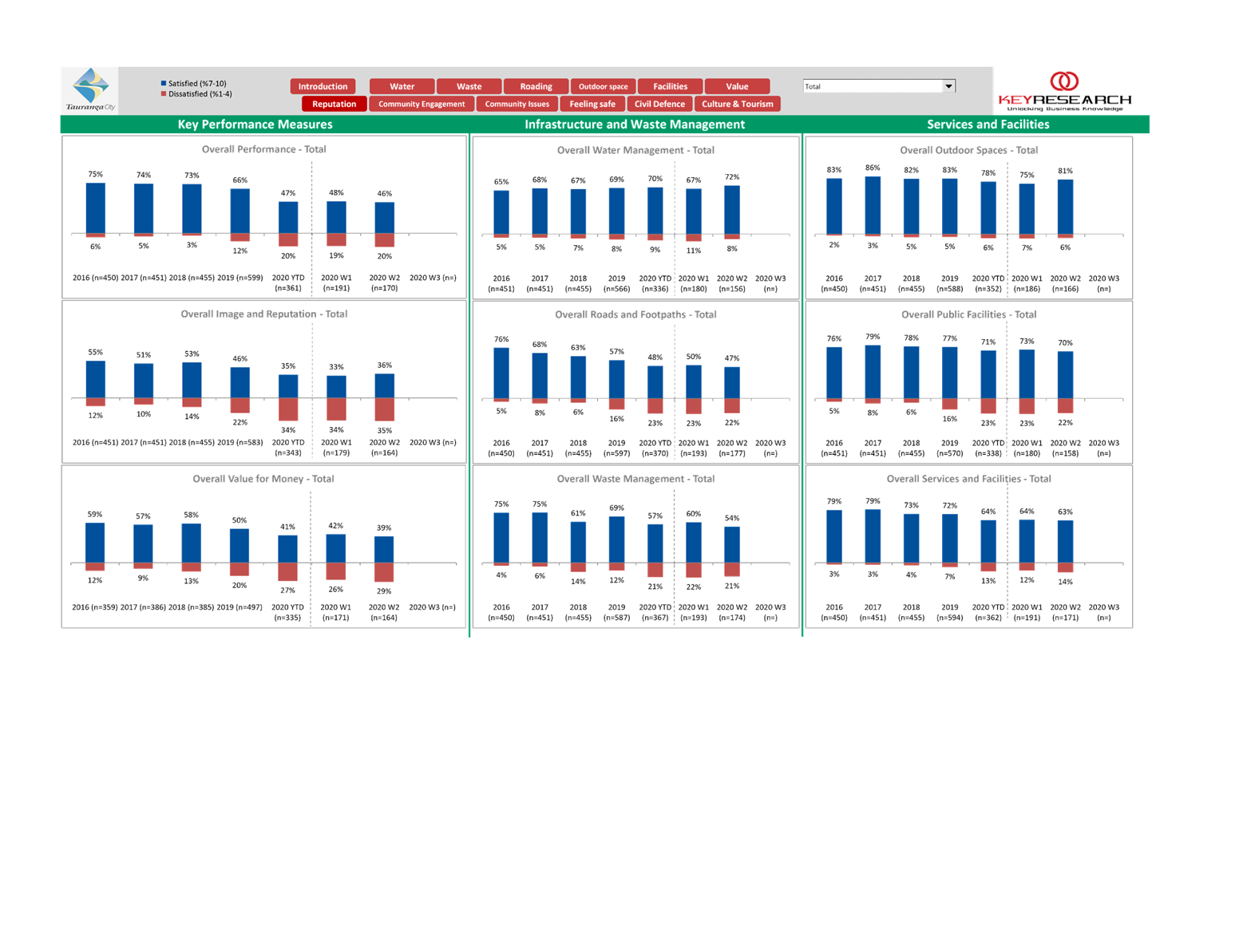
7.2 Financial
Update - COVID-19
File
Number: A11429123
Author: Kathryn
Sharplin, Manager: Finance
Authoriser: Paul
Davidson, General Manager: Corporate Services
Purpose of the Report
1. The purpose of this report
is to provide an update on:
(a) the short-term financial impacts
of COVID-19 through to June 30, 2020.
(b) Information affecting the
2020-21 annual plan.
(c) Information on key areas of
financial risk
2. This
report is a regular update on the financial situation as a result of COVID-19
and any other significant funding and financing outcomes.
Executive Summary
2019-20 Current Year
3. Results for April are
consistent with projections in the March quarterly report. Overall
revenue and capital expenditure are below monthly averages.
4. Cash Payments in April
were higher than monthly average levels reflecting higher project expenditure and
grant payments to the end of March, with May payments expected to be lower
reflecting the lower activity in April due to the lockdown at Alert Level 4.
5. Net debt is projected to
be $525m at year end, with total external debt at about $550m. Currently 78% of
total debt is at fixed interest rates.
6. Average interest rates at
30 June are projected to be 3.7%-3.75% based on a mix of existing debt and new
borrowing at rates between 1%-2.5% depending on duration. Wholesale rates have
been very low since the Reserve Bank actions to lower the OCR to 0.25% and
intervene in the wholesale market to lower long-term interest rates.
2020-21 Annual Plan
7. Scenario analysis and
capital project review for the annual plan is ongoing.
8. An
assumed reduction of 20-40% in business and housing-related revenue for the
2020-21 is being modelled for the annual plan. This is consistent with recent
economic projections, along with review of the reduction in council’s
housing-related revenue during the period of the Global Financial Crisis (GFC).
9. The annual plan is
modelled on borrowing continuing to be sourced from the Local Government
Funding Agency (LGFA).
10. The LGFA has
announced that it will recommend at a June Special General Meeting of the
shareholders of the Local Government Funding Agency to amend the net debt
/total revenue foundation policy financial covenant.
Financial Risks
11. To date there has been no
significant indication of the extent of pressure likely on the collection of
rates revenue next year.
12. Additional costs are likely to be
incurred on capital projects due to the lockdown period and with the controlled
work conditions required under alert level 3. We are working through the
financial implications for council associated with these costs.
Background
2019-20 Current Year
13. Monitoring of the current financial
year outcomes is continuing across revenue, operating and capital expenditure.
14. Activities significantly affected by
loss of operational revenue in April include council businesses closed during
the lockdown eg, Tauranga Airport, Baycourt, Beachside, and parking activity,
along with those activities with revenue from property leases where relief has
been provided. Building and planning consent activities have not shown an
immediate downturn in consent applications, which is assumed to be due to catch
up from prior periods.
15. Operating expenditure for April was
also down $5m on average monthly payments, while capital expenditure in April
was $10m, about $4m below the monthly average.
16. Cash outflows to suppliers in April
were $4m higher than the previous month, reflecting higher project expenditure
in March and grant payments. The lower expenditure levels identified for
April will be reflected in May payments to suppliers.
17. Interest rates remain low. Wholesale
short-term interest rates have decreased in line with Reserve Bank’s
interest rate (OCR) cut to 0.25%. Long-term interest rates which would
otherwise be more elevated have been lowered as a result of Reserve Bank
intervention in the wholesale market. Interest rates on debt sourced from the
LGFA range from 1% for one-year borrowing, to 2.5% for 13-year borrowing.
2020-21 Annual Plan
18. Work is ongoing to assess the
impacts of COVID-19 on activity revenue and costs for next financial
year.
19. An assumed reduction of 20-40% in
business and housing-related revenue for the 2020-21 is being modelled for the
annual plan. This is based on recent economic projections, along with review of
the reduction in council’s housing-related revenue during the period of
the Global Financial crisis. While April results in the building services
activity do not support this reduction, it is anticipated that the reduction
will occur as the recessional impacts of COVID-19 begin to show over the next
few months. This assumption is in line with the initial high-level
estimate of revenue reduction for 2020-21.
20. Council
borrowing assumptions for the annual plan are based on continued funding
through LGFA. Currently, about 75%-78% of council borrowing is at fixed
interest rates either from borrowing at fixed interest rates or from hedging
with interest rate swaps. Because of the high amount of fixed interest
positions and current very low interest rates, the cost to terminate our fixed
interest positions at this time would be high. Attachment 1 contains more
information on debt and interest risk management.
21. The LGFA announced to the NZX on 4
May 2020 that it has reviewed the financial policy financial covenants.
It will recommend to shareholders at a Special General Meeting in June an
amendment to the net debt/ to total revenue foundation policy financial
covenant. Currently, local authority borrowers are required to maintain a net
debt/ total revenue ratio below 250%. The proposed changes enable a ratio
up to 300% for the years to June 2021 and June 2022, reducing over subsequent
years to 280% by 2026. The details of the proposed amendment are included
in Attachment 2. The LGFA presentation supporting this proposal is
included as Attachment 3.
22. The amended ratios will come into
effect if they are supported by a majority of shareholder councils at the June
Special General meeting. Prior to that meeting a report will be prepared for
council seeking approval for the proposed LGFA amendment, along with amendment
to TCC treasury policy if required.
23. The proposed debt to revenue
amendment would increase borrowing capacity as a one-off. The annual plan
capital programme would be able to be delivered within the 300% ratio, subject
to assumptions on revenue loss and expenditure reduction. There will be an
ongoing requirement in the LTP to increase revenue to support this higher
borrowing as the debt to revenue ratio is required to reduce over the next few
years, and capital expenditure has associated operational costs.
Financial Risks
24. Monitoring of receipts and requests
for rates assistance is ongoing. Discussions with ratepayers around rates
collection are more likely to happen in July-August. To date, we have not
had significant communication with ratepayers about their ability to pay rates
for next year. There has been no significant change to the amount collected in
advance for next year under direct debit arrangements. There have been a
small number of people under payment arrangement asking to ease these payments.
25. Additional costs are likely to be
incurred on projects due to the lockdown period and with the controlled work
conditions required under Alert Level 3. Staff are working through the
financial implications for council associated with these costs.
Strategic / Statutory Context
26. COVID-19 represents a significant
challenge to the financial sustainability and effectiveness of Council.
Regular update of the financial situation and risks enables Council to be
informed and to take these matters into account in its key decision making,
particularly in relation to the annual plan.
Options Analysis
27. There are no
options associated with this report. The report is provided as information only.
Significance
28. Under the
Significance and Engagement Policy 2014, the decision to receive this report is
of low significance.
Next Steps
29. This report is intended to regularly
update the FARC committee on Council’s financials and risks. This
information will also feed into the work on the annual plan 2020-21 that is
ongoing.
30. A report will be prepared for
council to confirm support for the proposed amendment to LGFA financial
covenants.
Attachments
1. Debt and interest rate
risk management 4 May 2020 - A11439515 ⇩ 
2. Attachment 2: NZX
Announcement LGFA Proposed Change to Foundation Policy Covenant 04 May 2020 -
A11450531 ⇩ 
3. Attachment 3: LGFA 5
May 2020 Investor Presentation - Proposed Changes to Foundation Policy -
A11450545 ⇩ 
|
Finance, Audit
and Risk Committee Meeting Agenda
|
12 May 2020
|
Attachment 1: Debt and Interest Rate Risk Management 4 May 2020
1. Council’s external
debt as at 30 April 2020 was $525m and forecast to be between $550m and $555m
by 30 June 2020. Net debt, which is adjusted for deposits, is projected
to be $525m at 30 June.
2. Average interest rate is
forecast to be between 3.70% and 3.75% at 30 June 2020. This average
includes new borrowings and rate sets as well existing debt at higher rates.
3. Current market interest
rates on debt sourced from LGFA range from 1.0% for 1 year to 2.5% for 13
years. Current market interest rates for new borrowing is significantly lower
as a result of the Reserve Bank cutting the Official Cash Rate to 0.25% and
intervening in the wholesale market commencing last week to lower long-term
interest rates.
4. Currently 78% of the debt
is at fixed interest rates, from 1 year to 13 years (longest dated borrowing -
15 April 2033). This percentage is a combination of borrowing at fixed rates
($85m) and hedging (balance approx. $310m).
5. The fixed interest rate
debt position is forecast to decrease to 75% by 30 June 2020 as a result of new
borrowing.
6. Fixed interest rate
position on debt is achieved by issuing debt at fixed interest rates (currently
at $85m) and undertaking hedging with interest rate swaps. To terminate
these fixed interest positions it would cost in the order of $75m or more.
7. The
table below shows the existing fixed interest rate position as at 30 April
2020:
|
1.
Month End
|
2.
Fixed Rate
|
3.
Month End
|
4.
Fixed Rate
|
|
5.
30 Jun 2020
|
6.
$399m
|
7.
30 June 2025
|
8.
$209m
|
|
9.
30 Jun 2021
|
10.
$360m
|
11.
30 June 2026
|
12.
$194m
|
|
13.
30 Jun 2022
|
14.
$311m
|
15.
30 June 2027
|
16.
$144m
|
|
17.
30 Jun 2023
|
18.
$283m
|
19.
30 June 2028
|
20.
$128m
|
|
21.
30 June 2024
|
22.
$283m
|
23.
30 June 2029
|
24.
$98m
|
8. The
table below shows the existing debt maturity profile as at 30 April 2020:
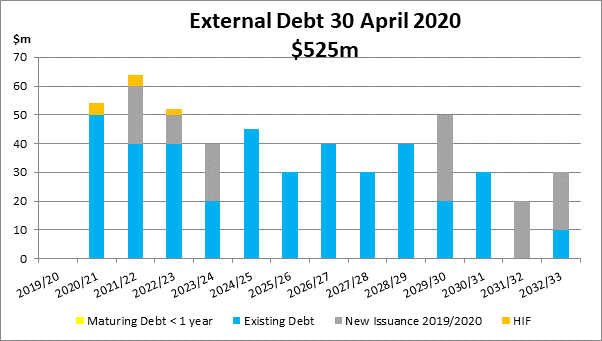
|
Finance, Audit and Risk Committee
Meeting Agenda
|
12 May 2020
|

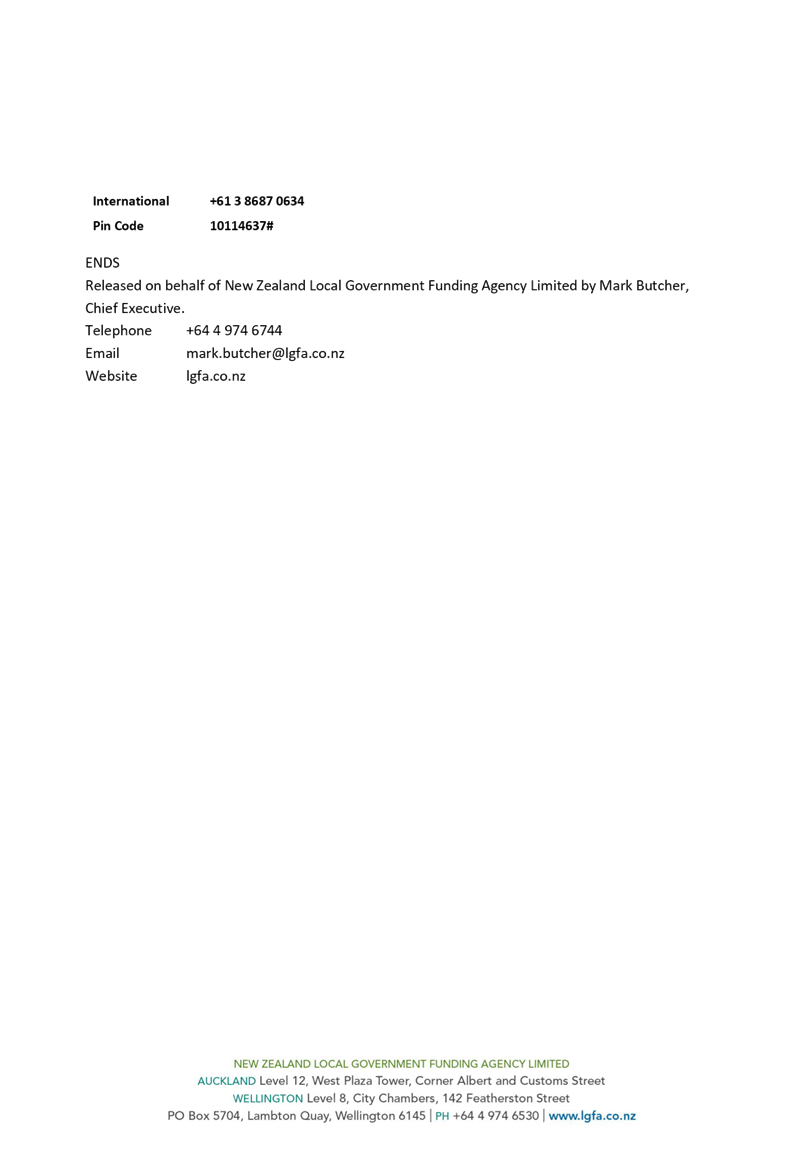
|
Finance, Audit and Risk Committee
Meeting Agenda
|
12 May 2020
|
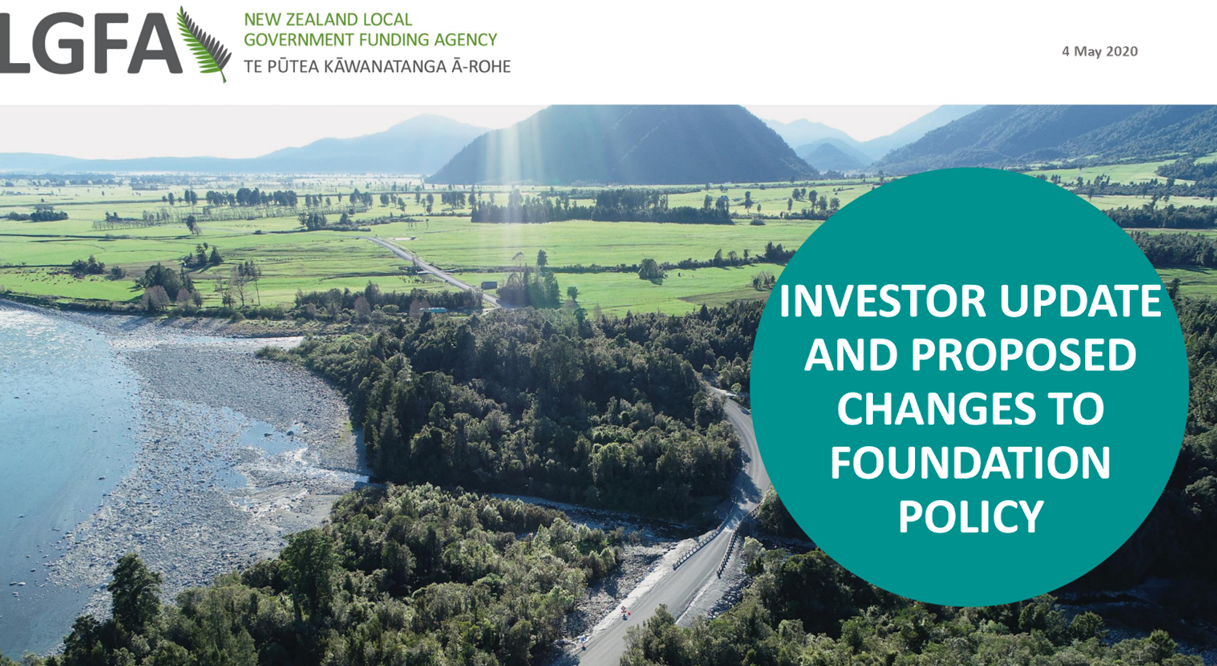
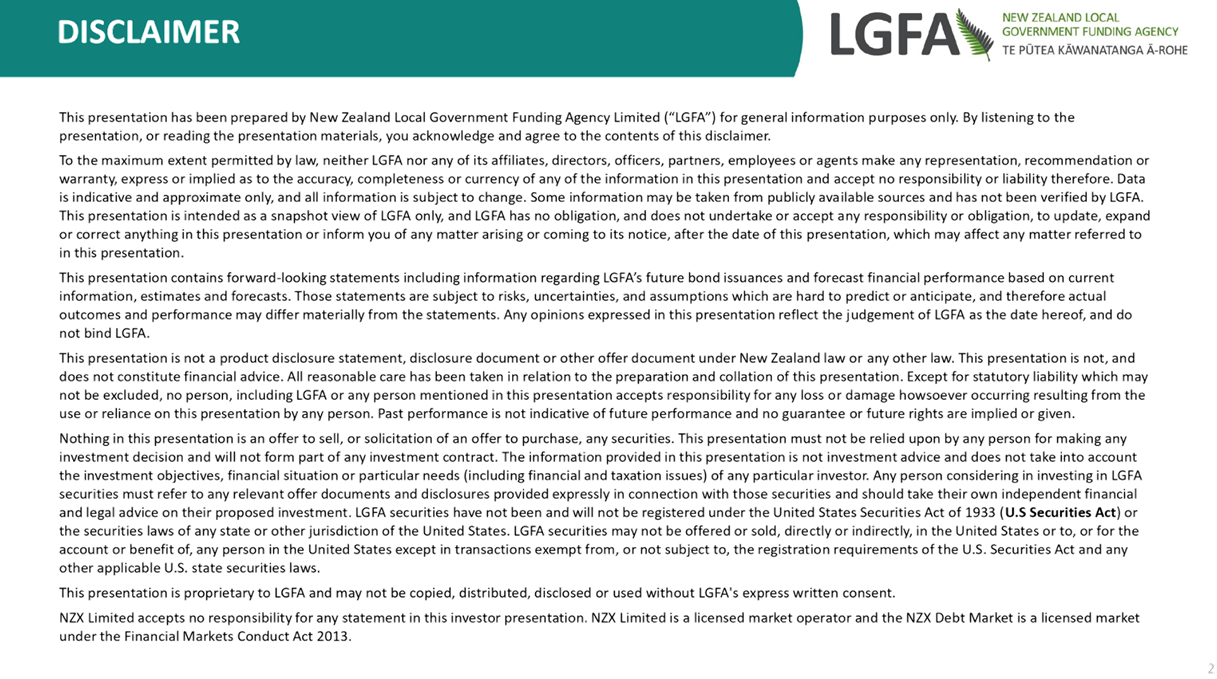
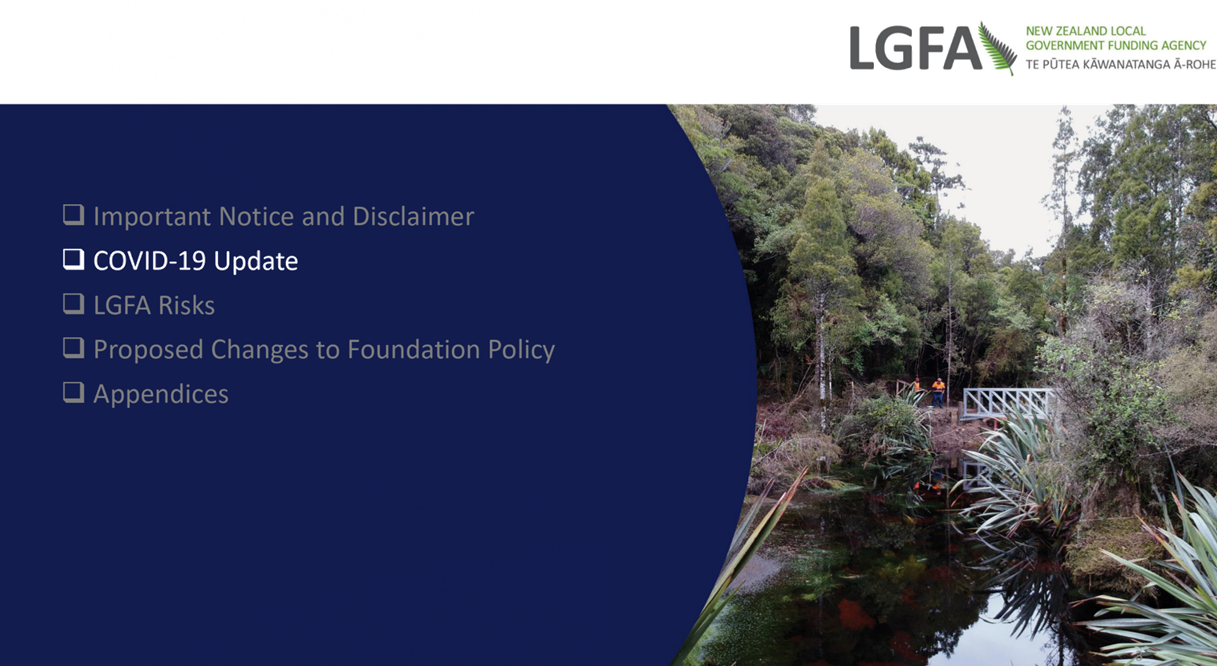
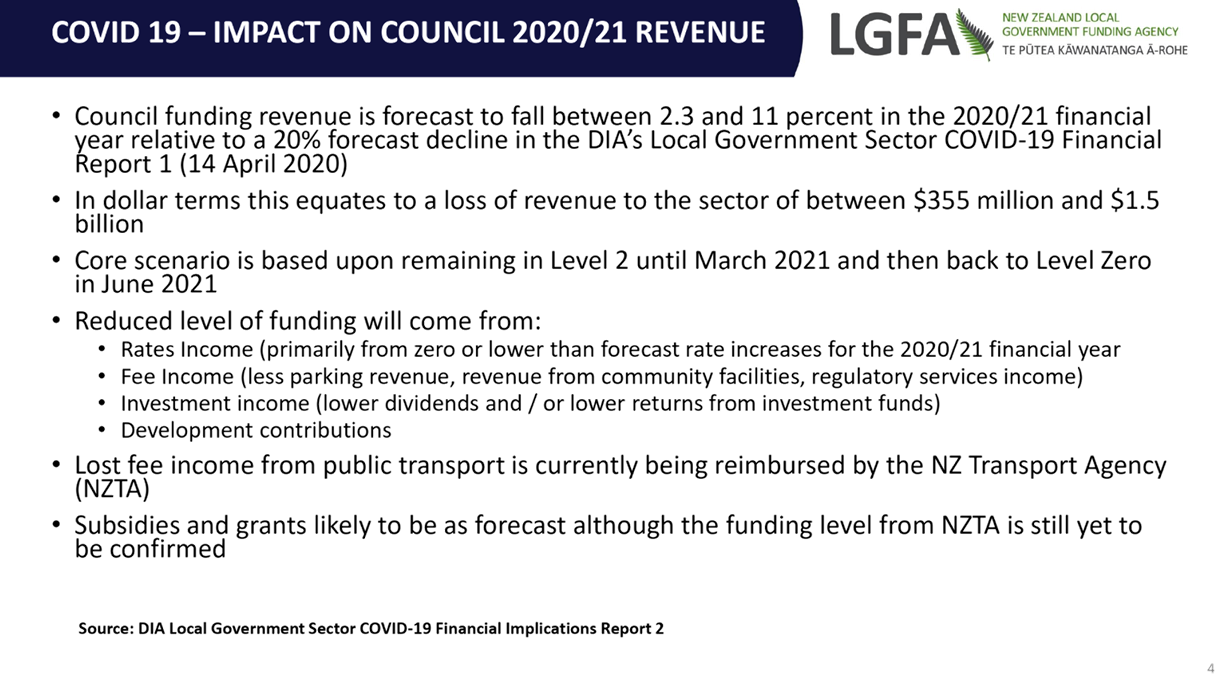
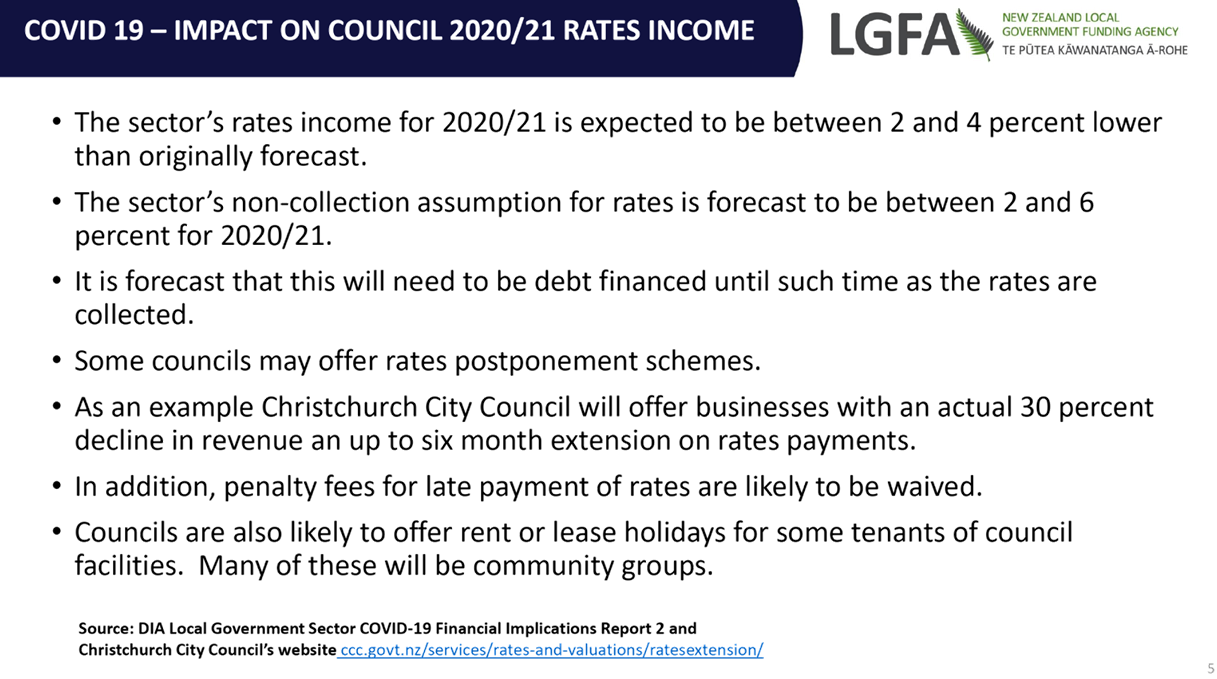
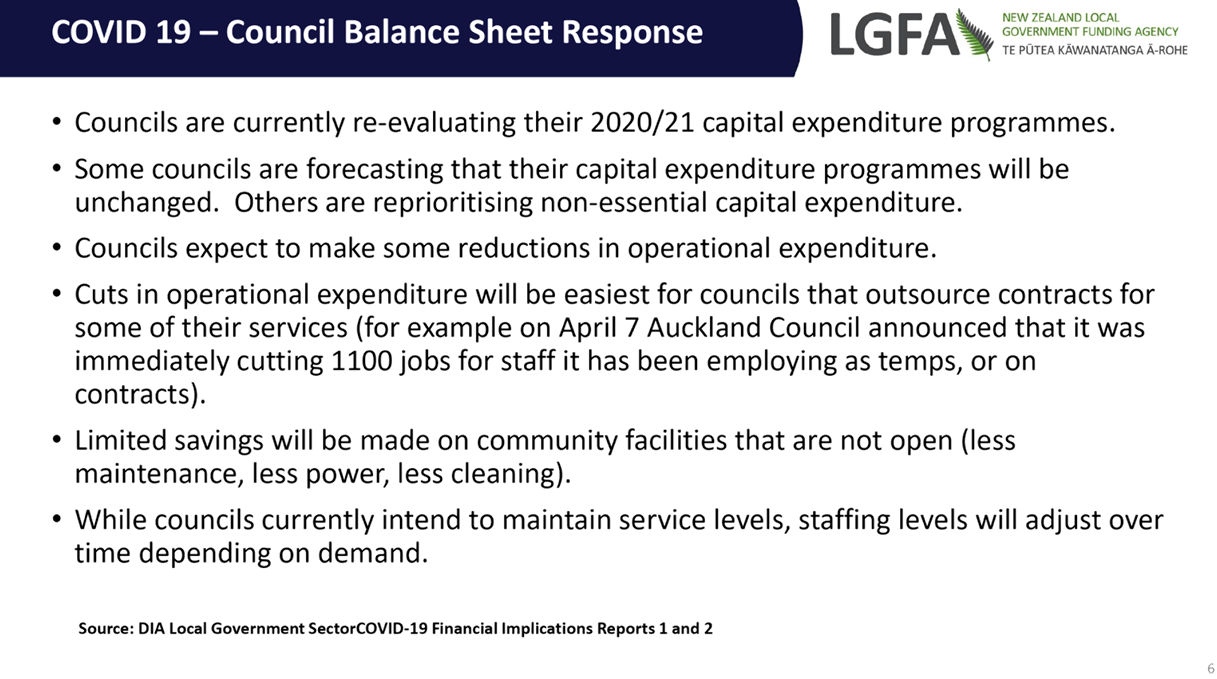
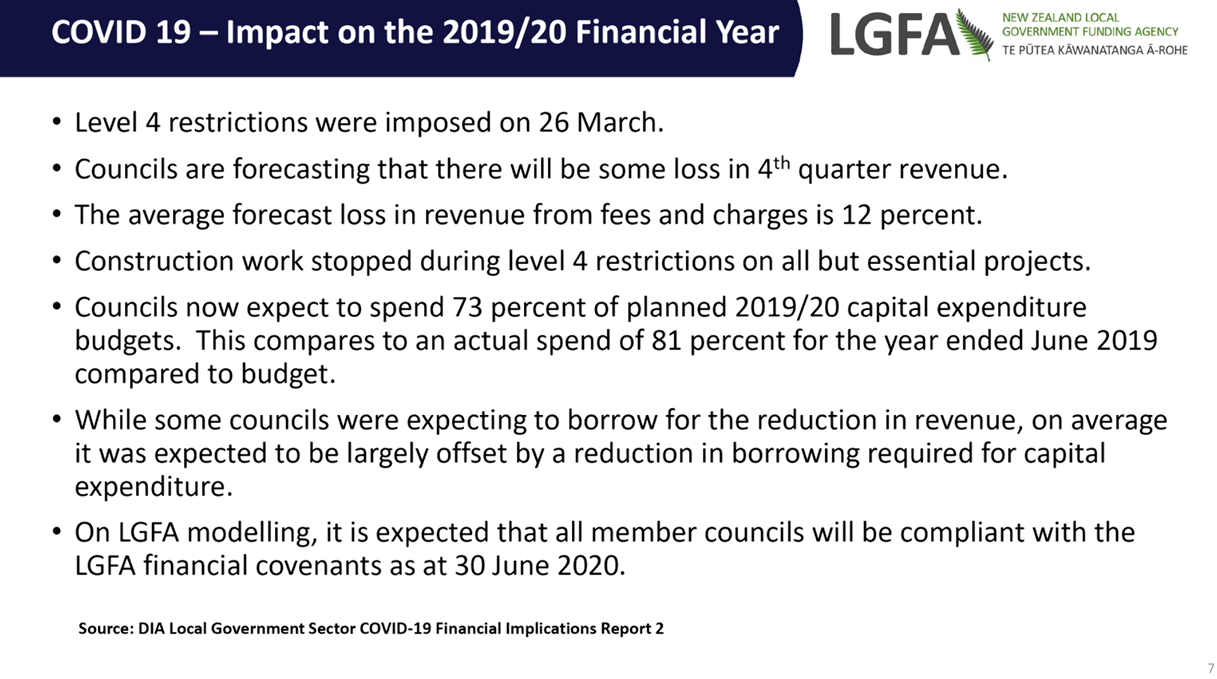
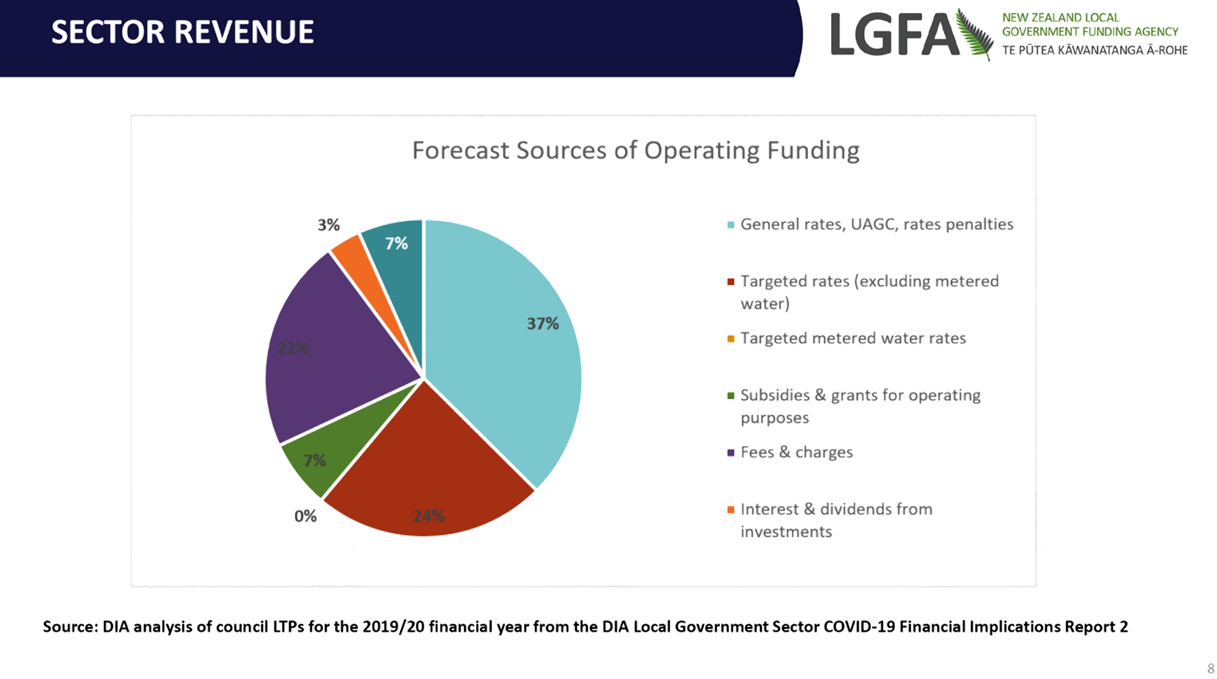
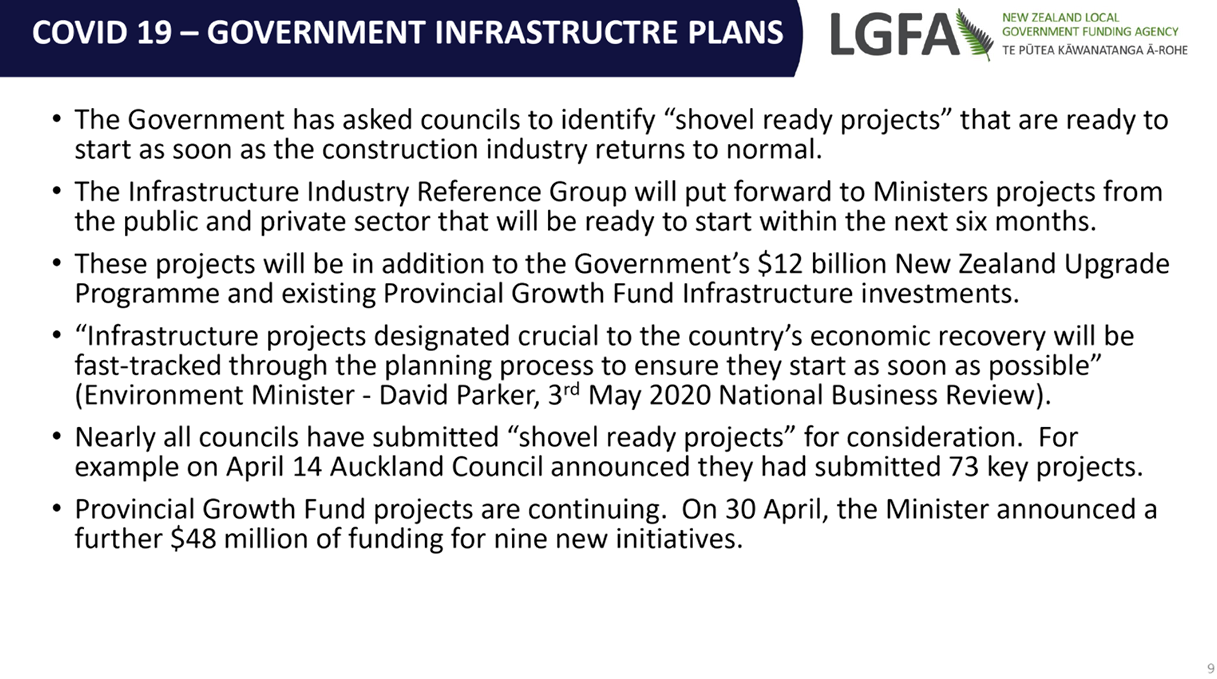
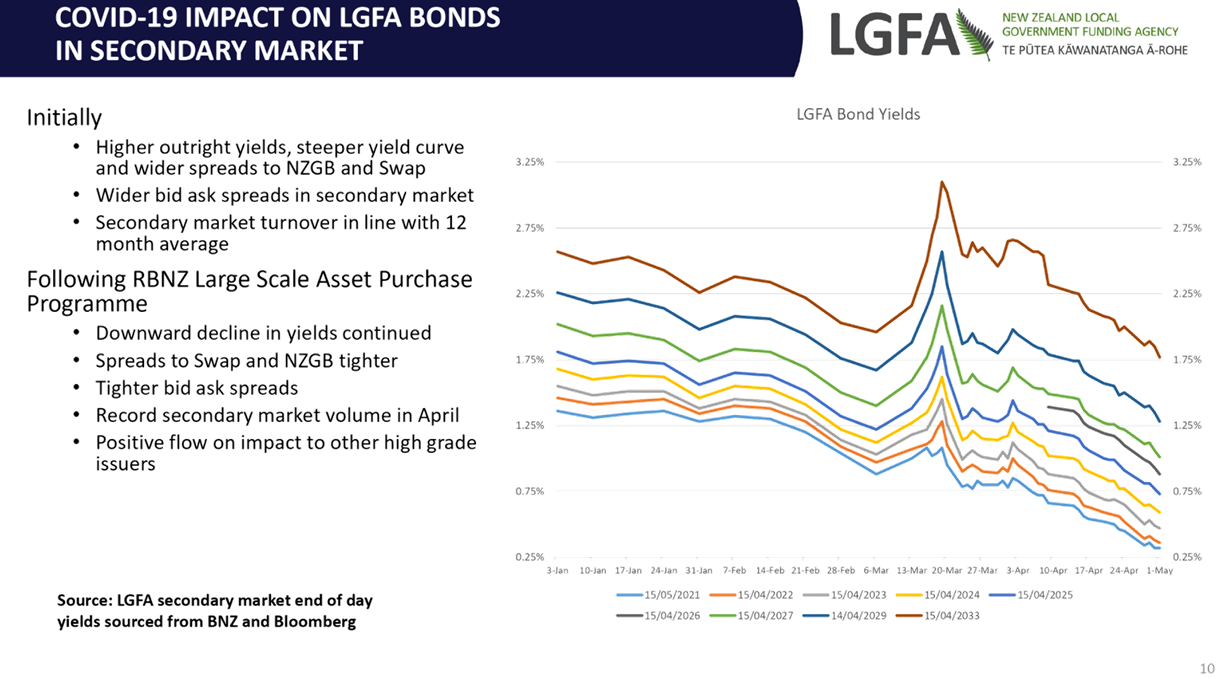
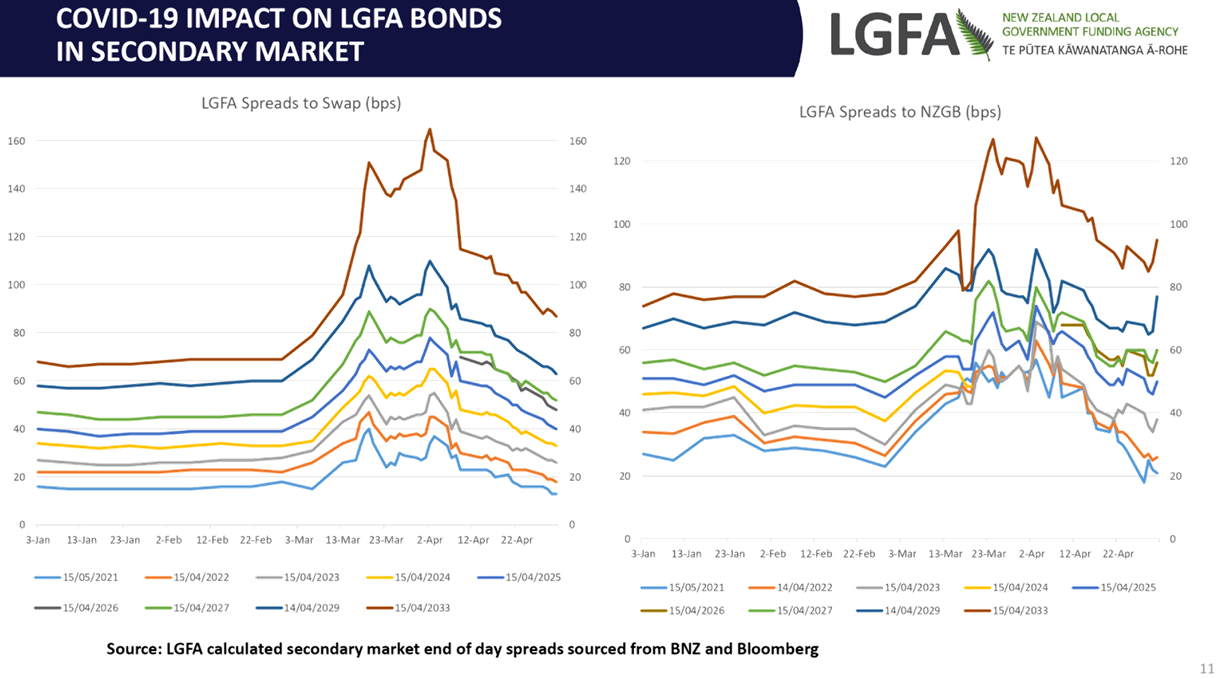

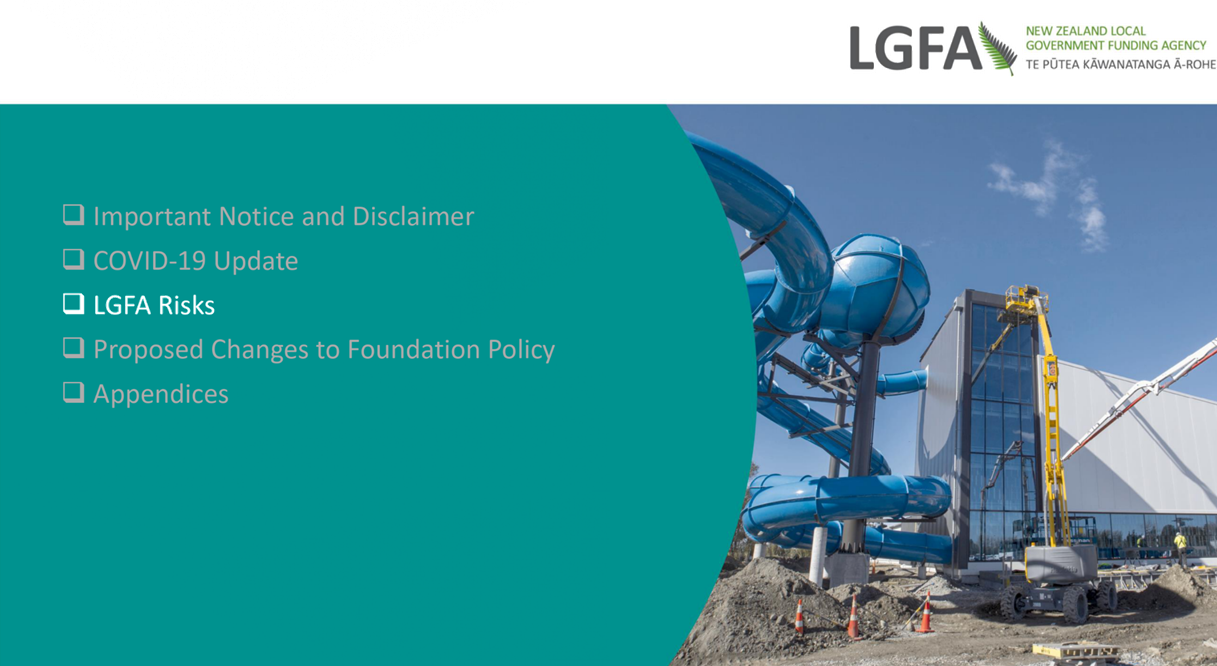
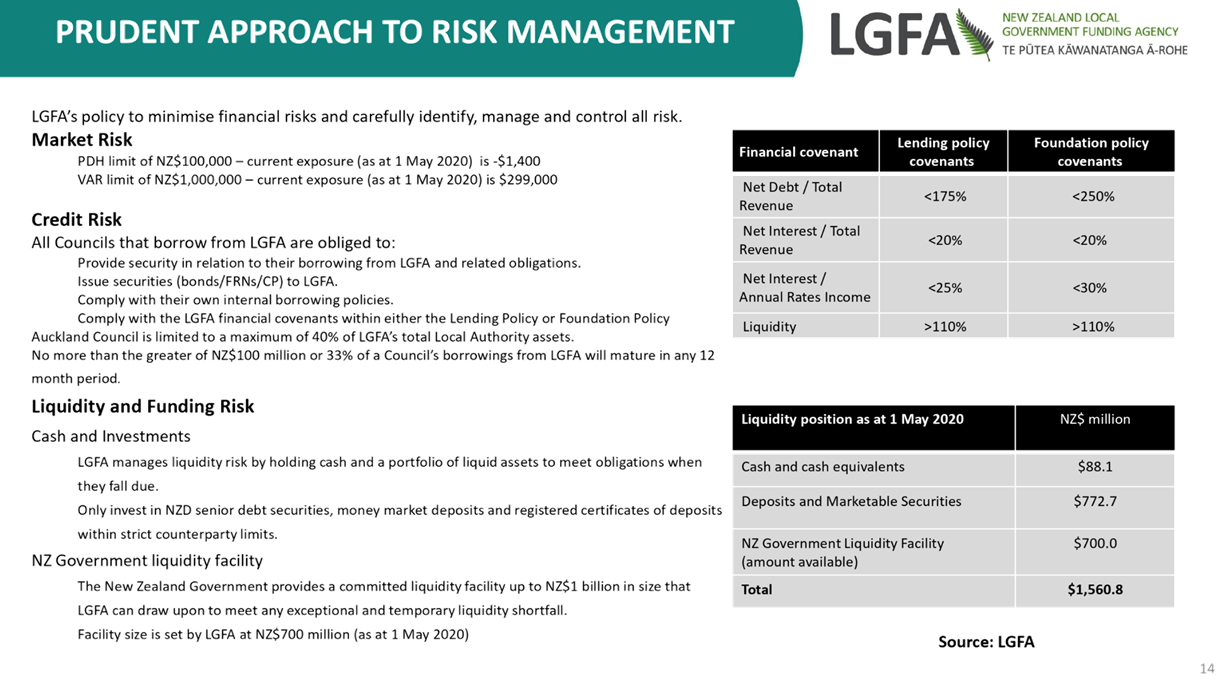
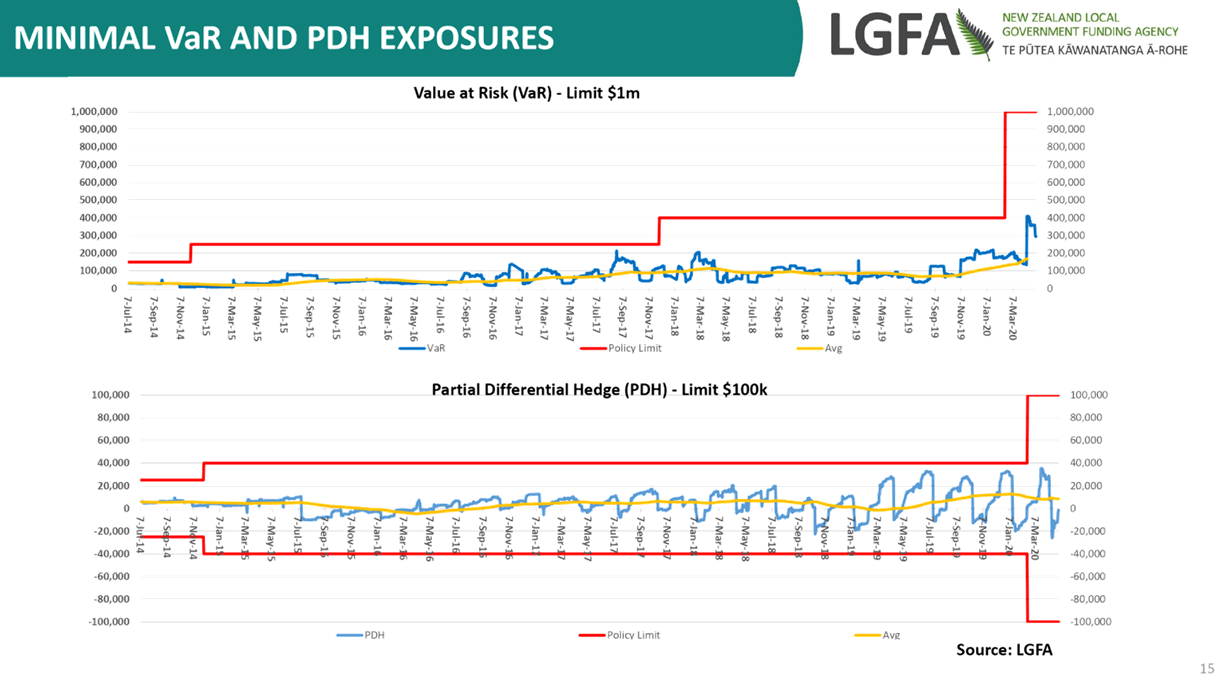
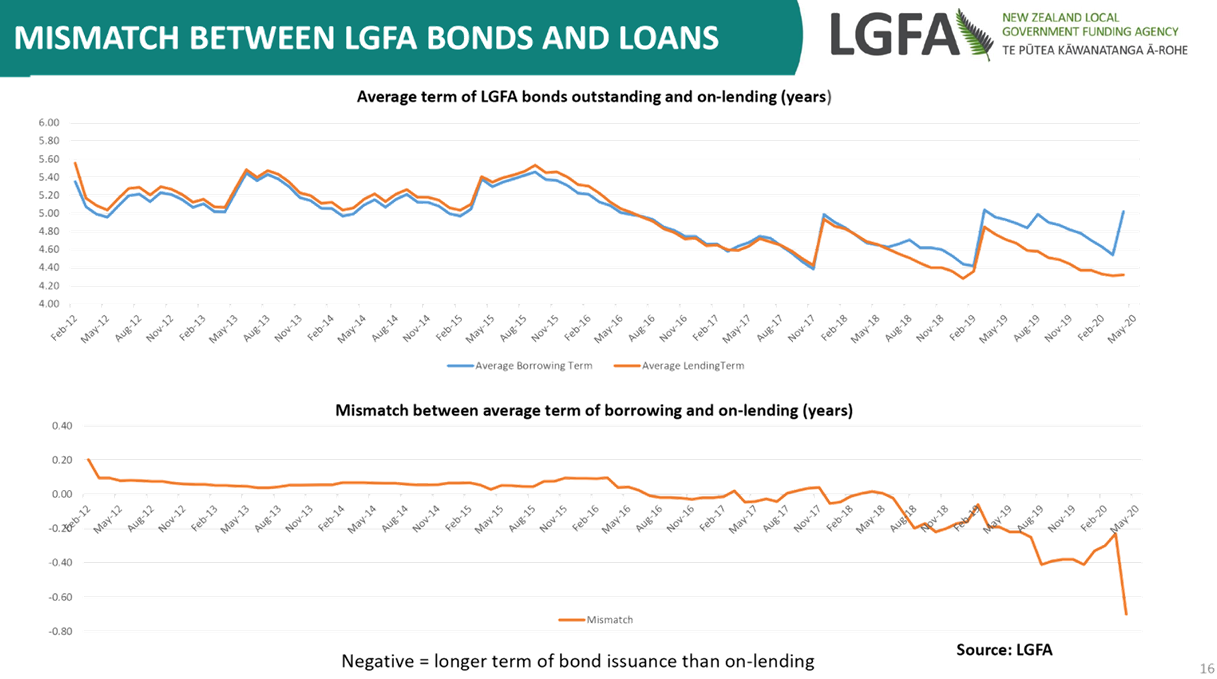
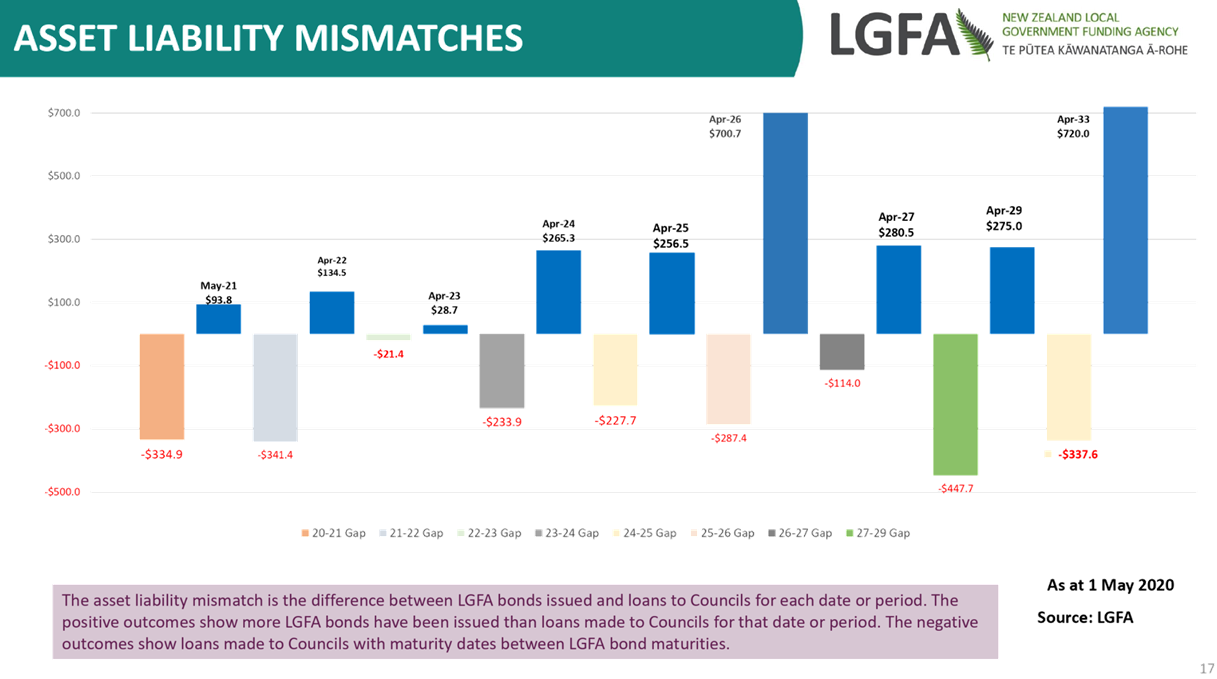
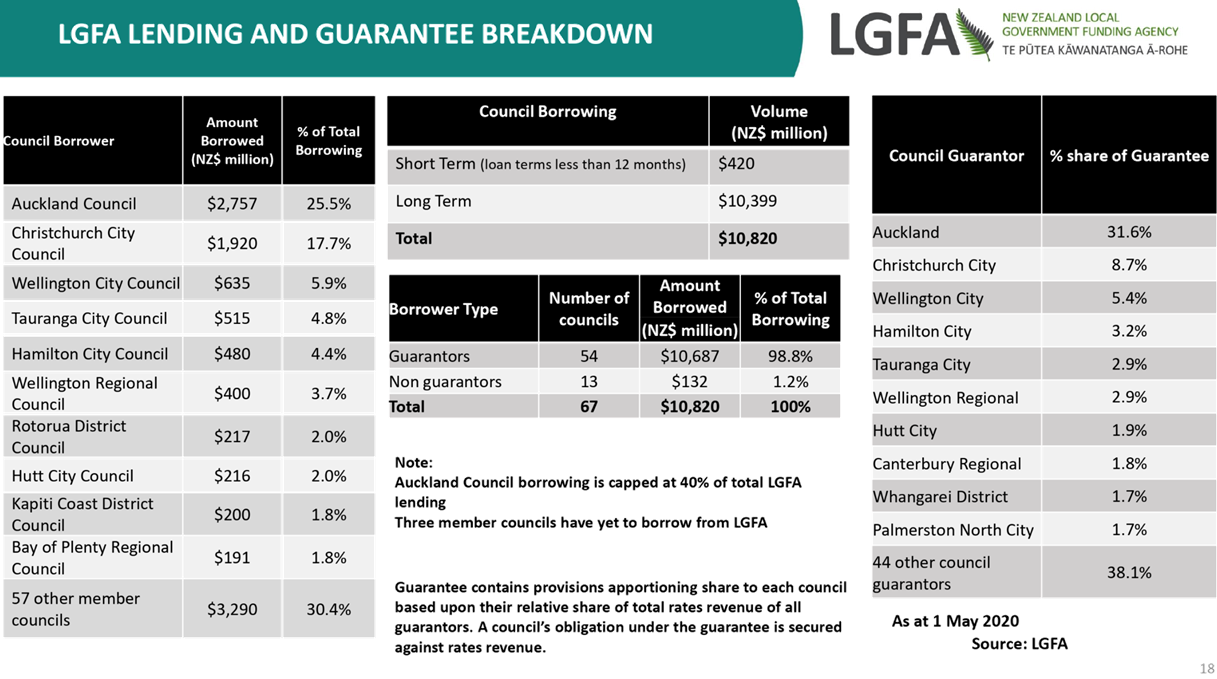
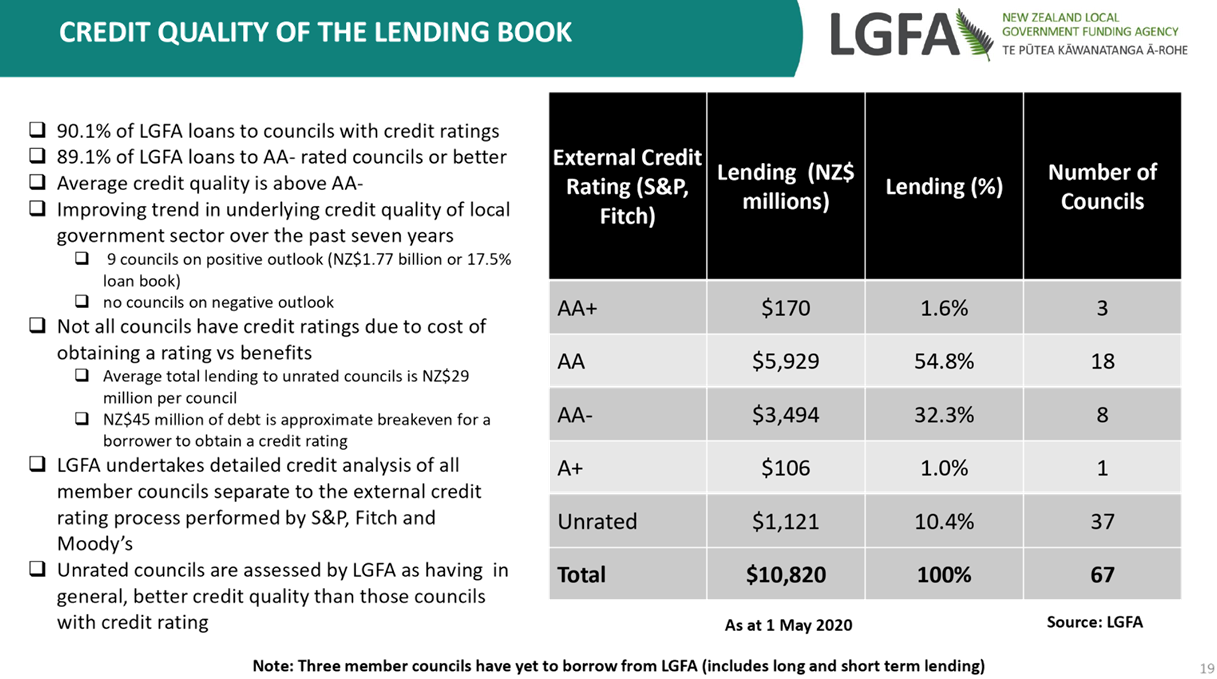
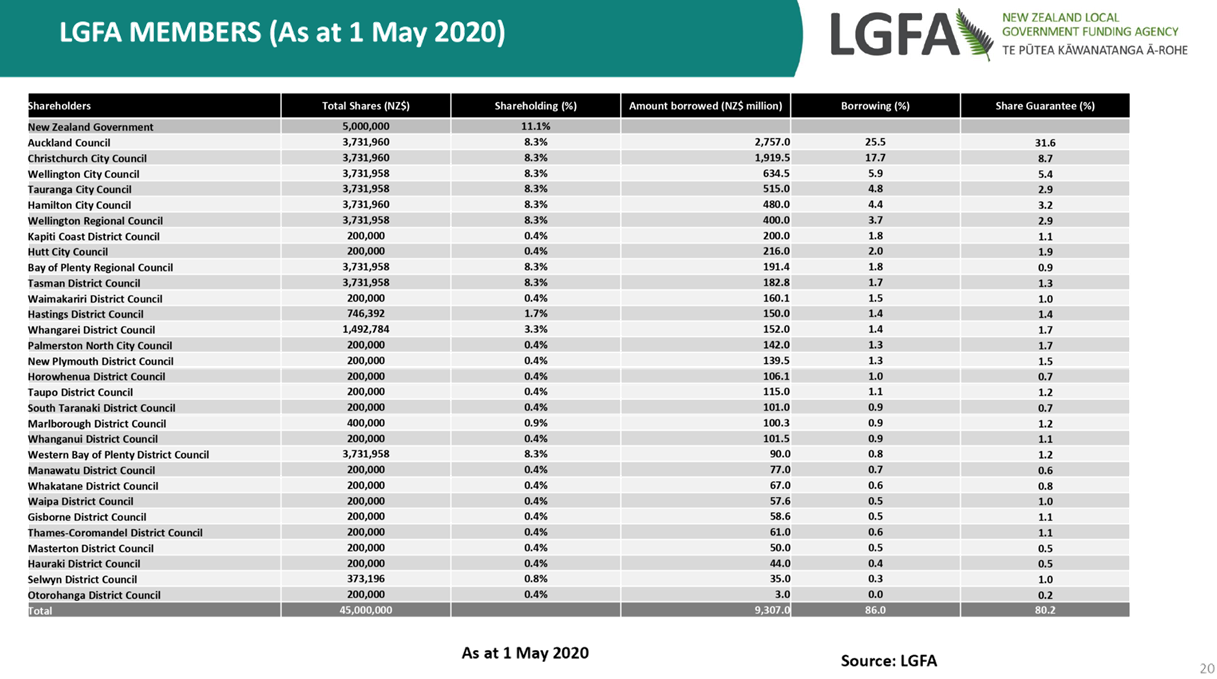
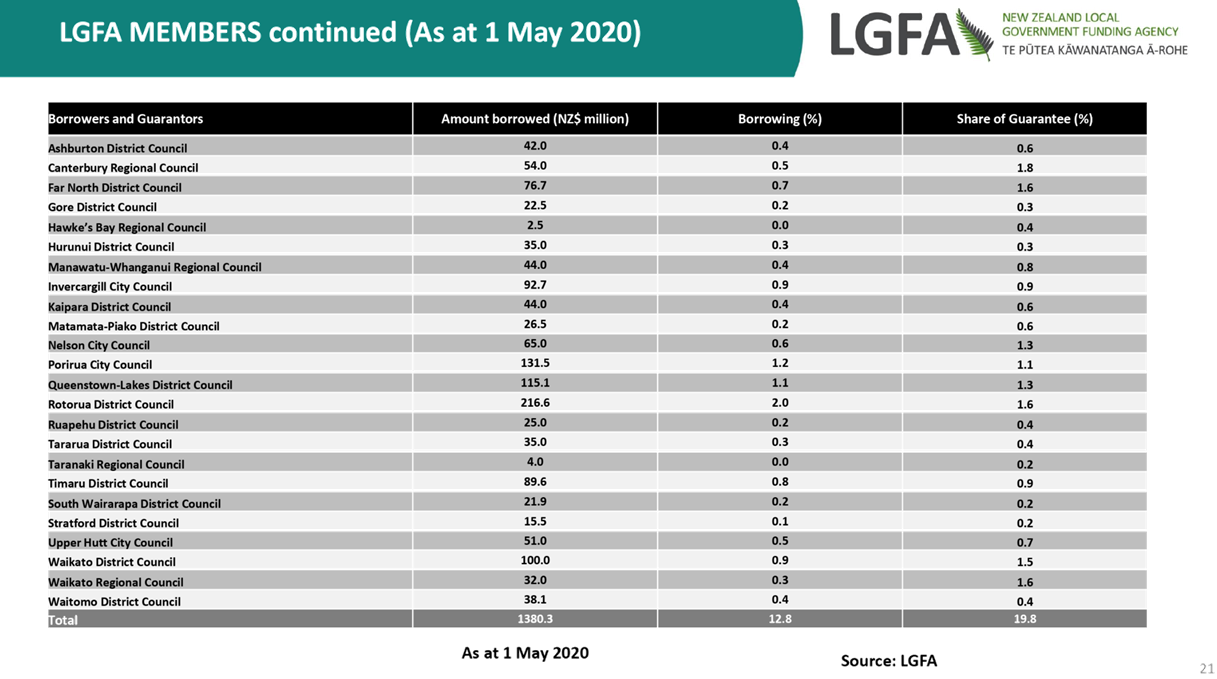
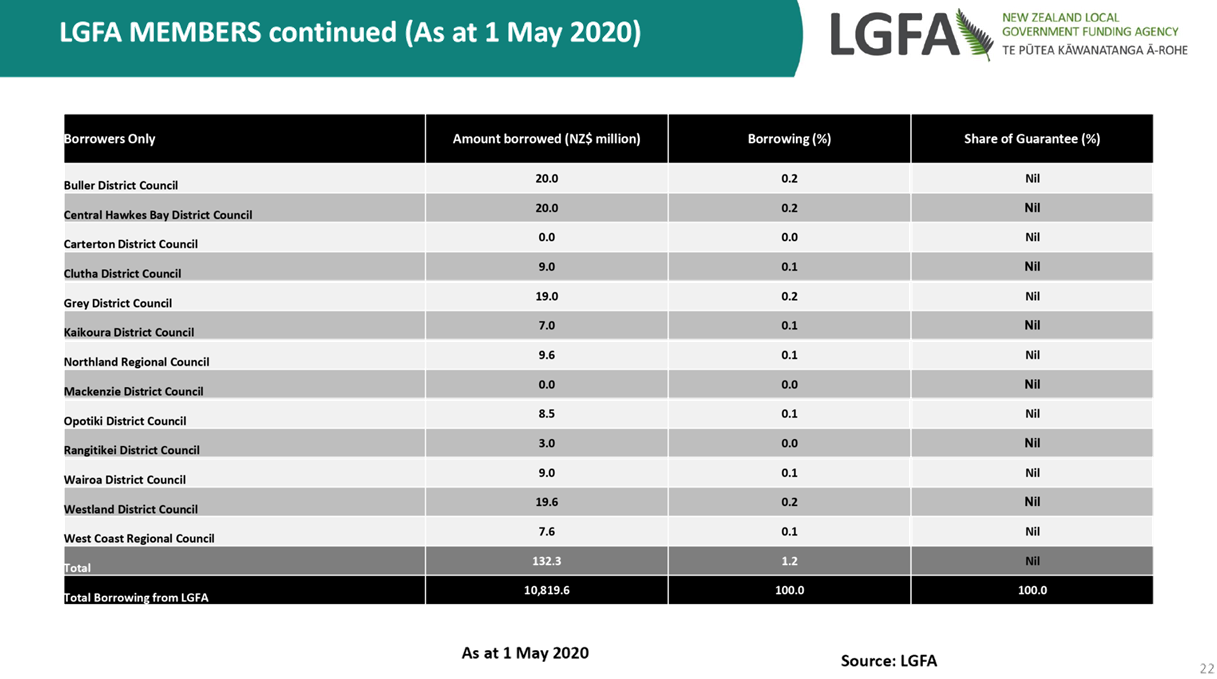
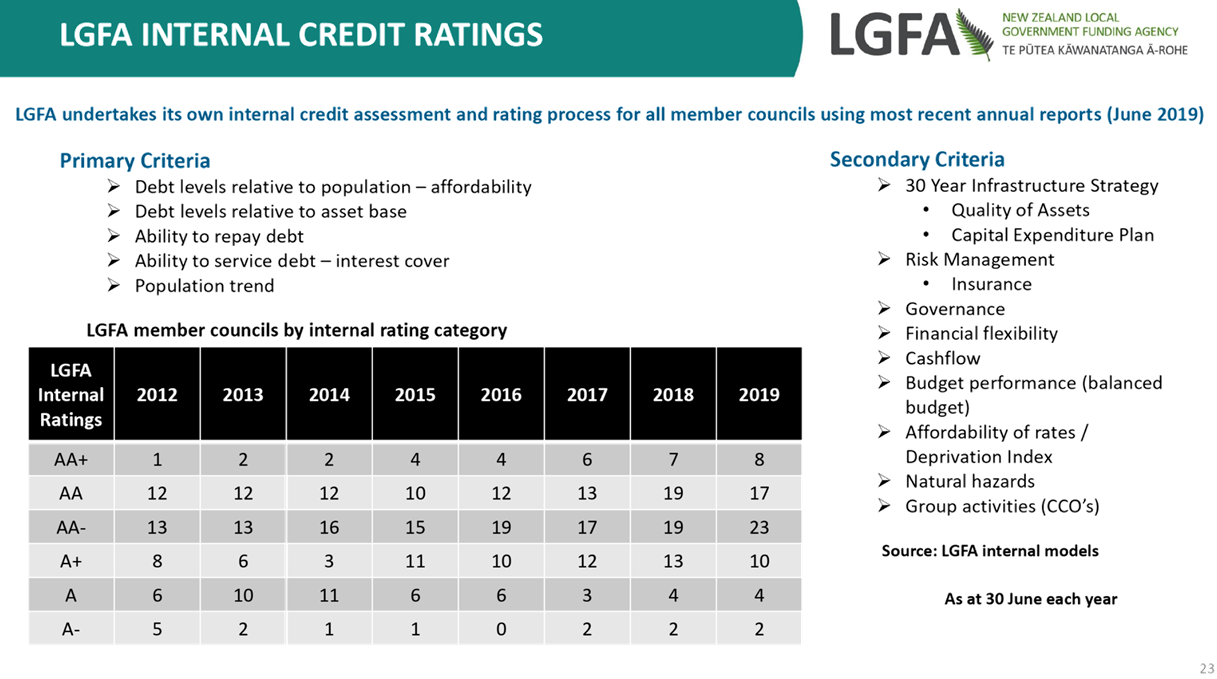
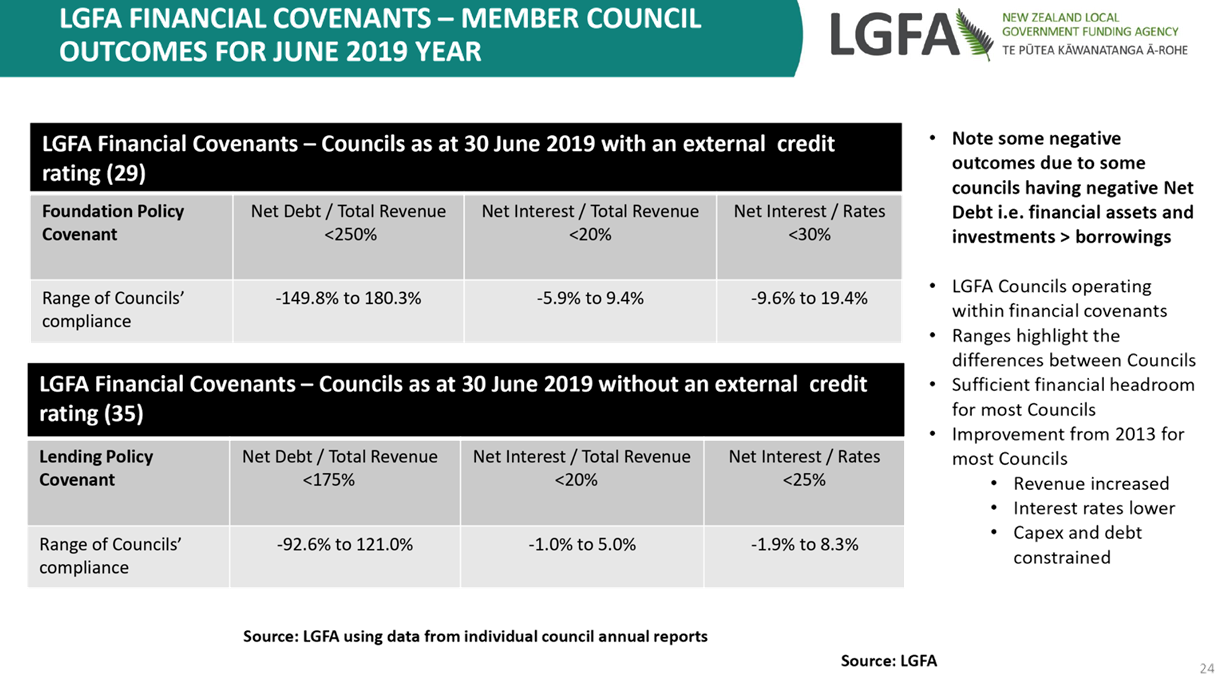
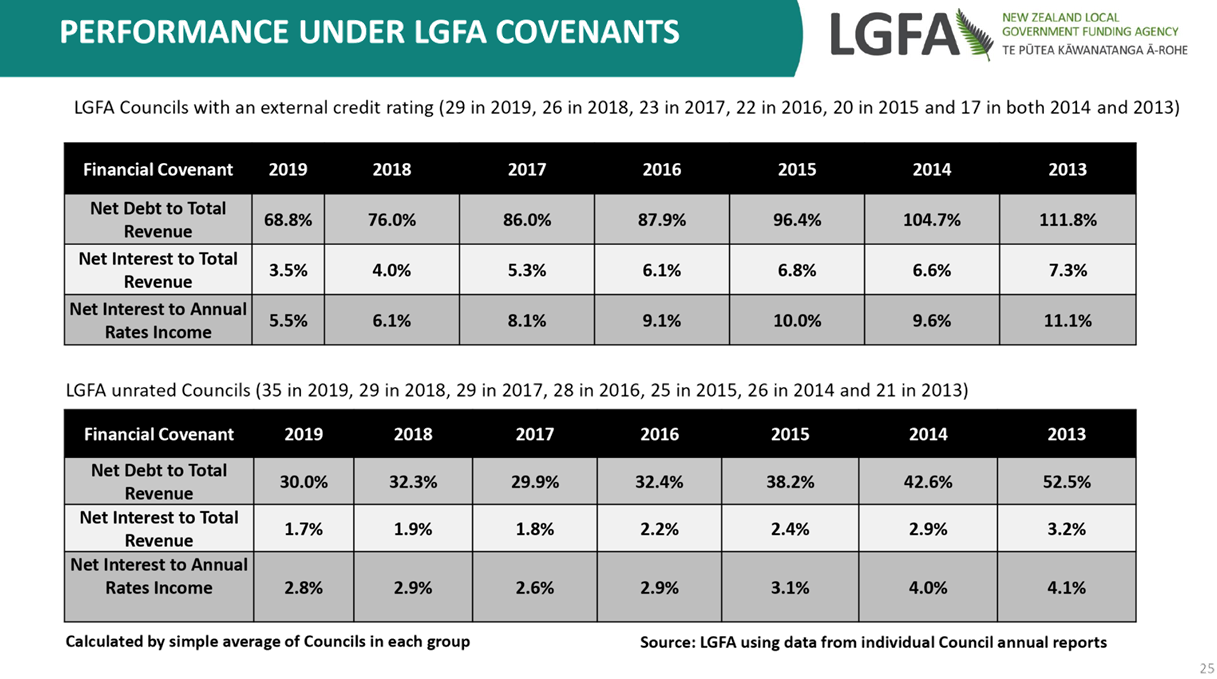
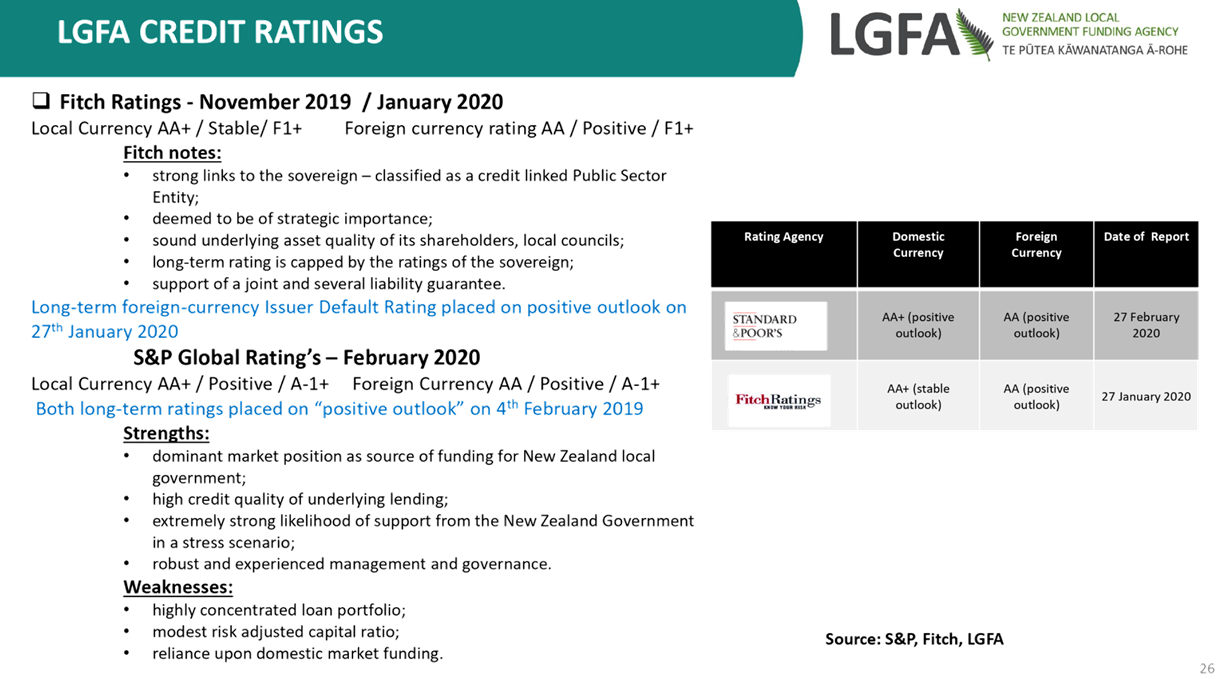
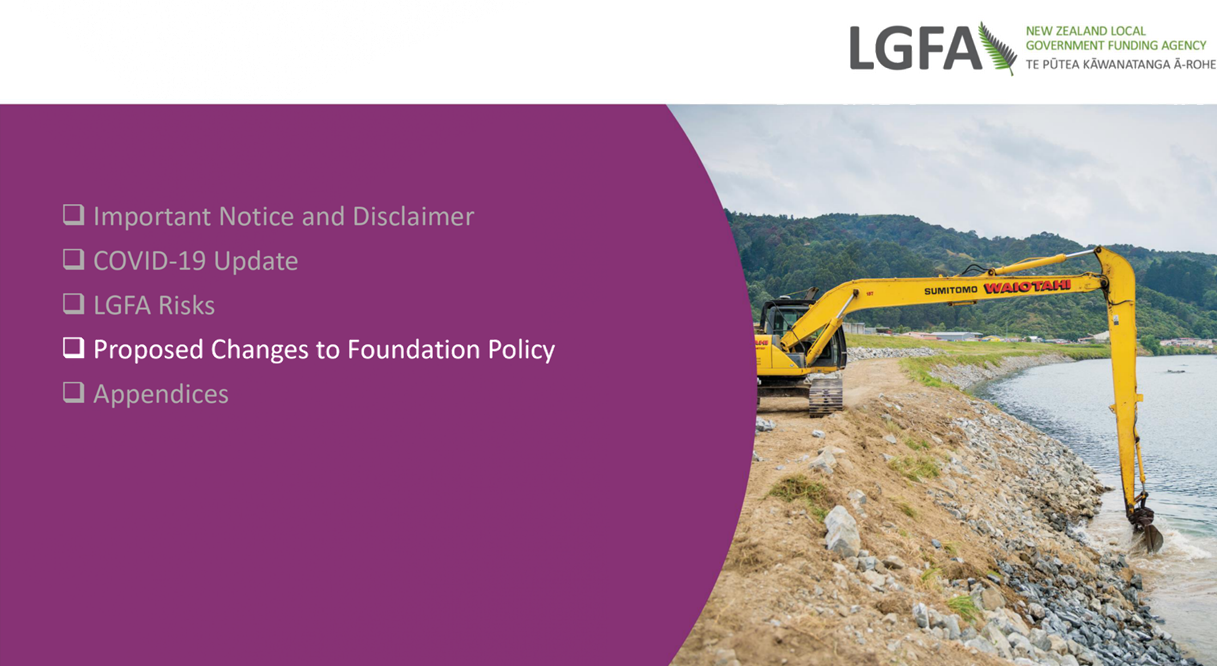
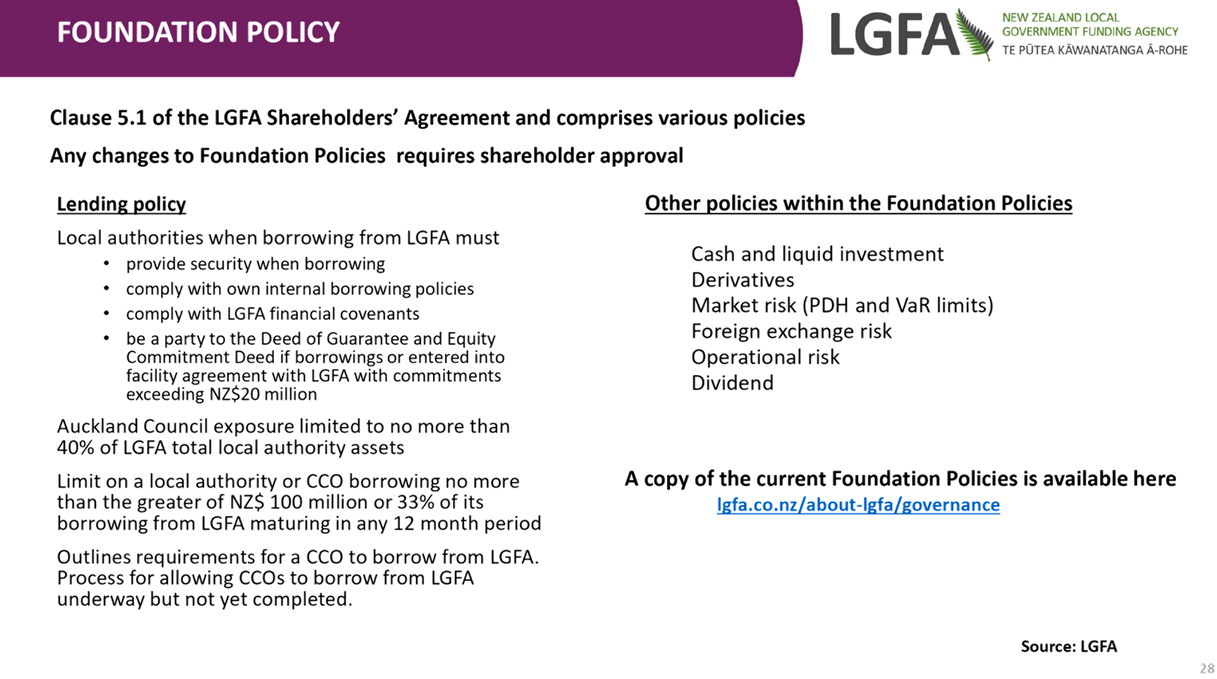
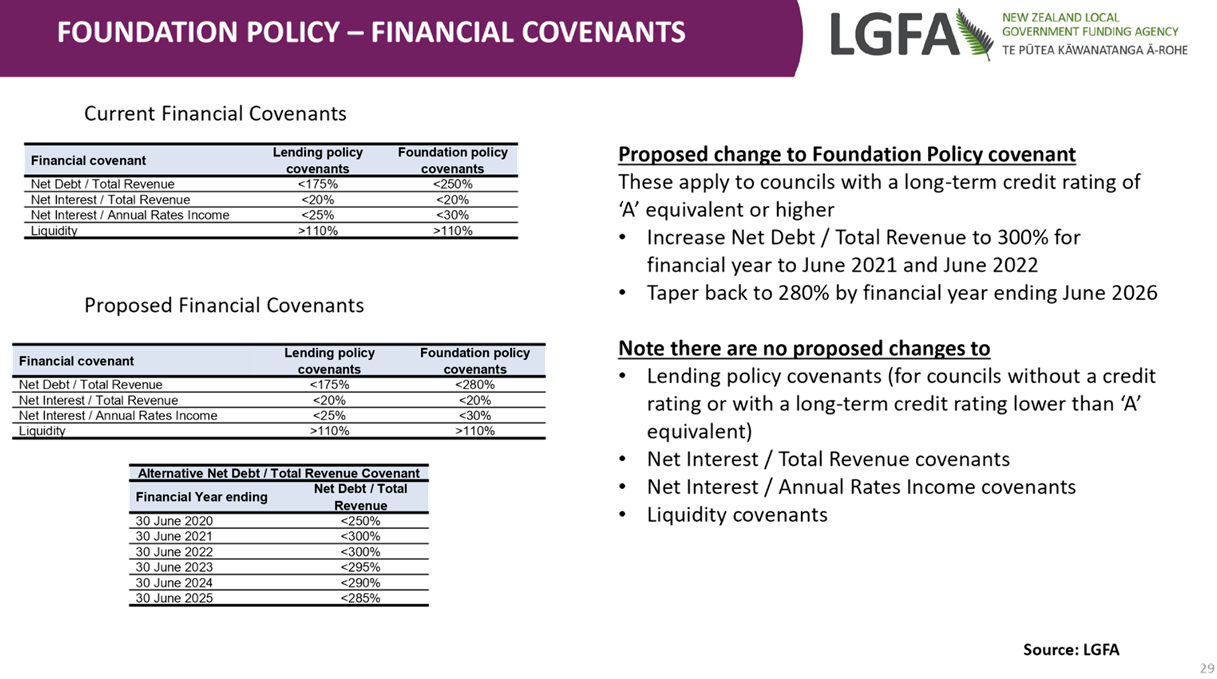
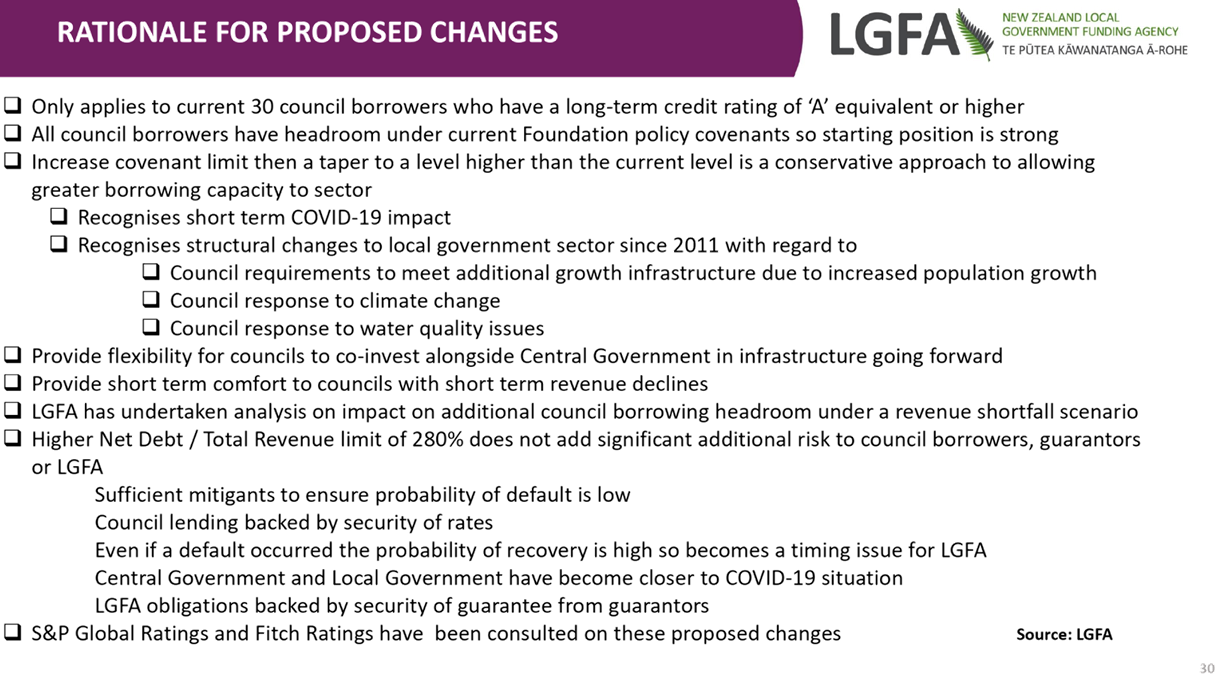
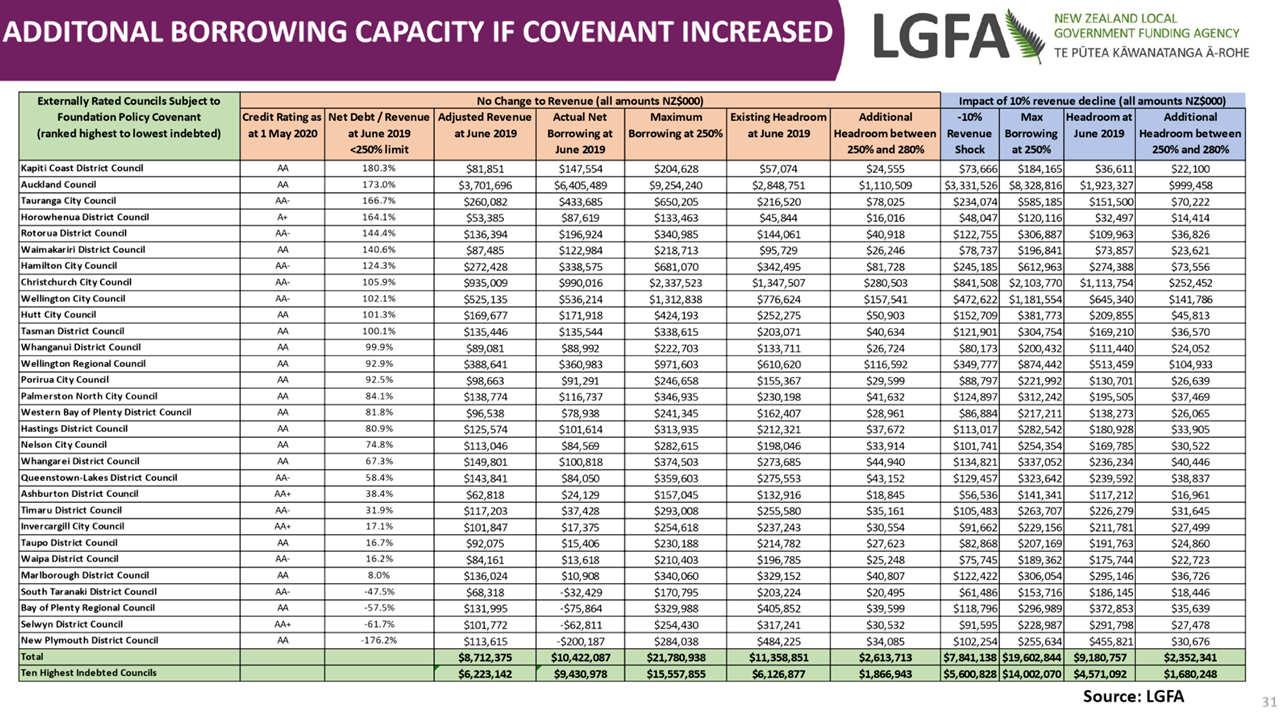
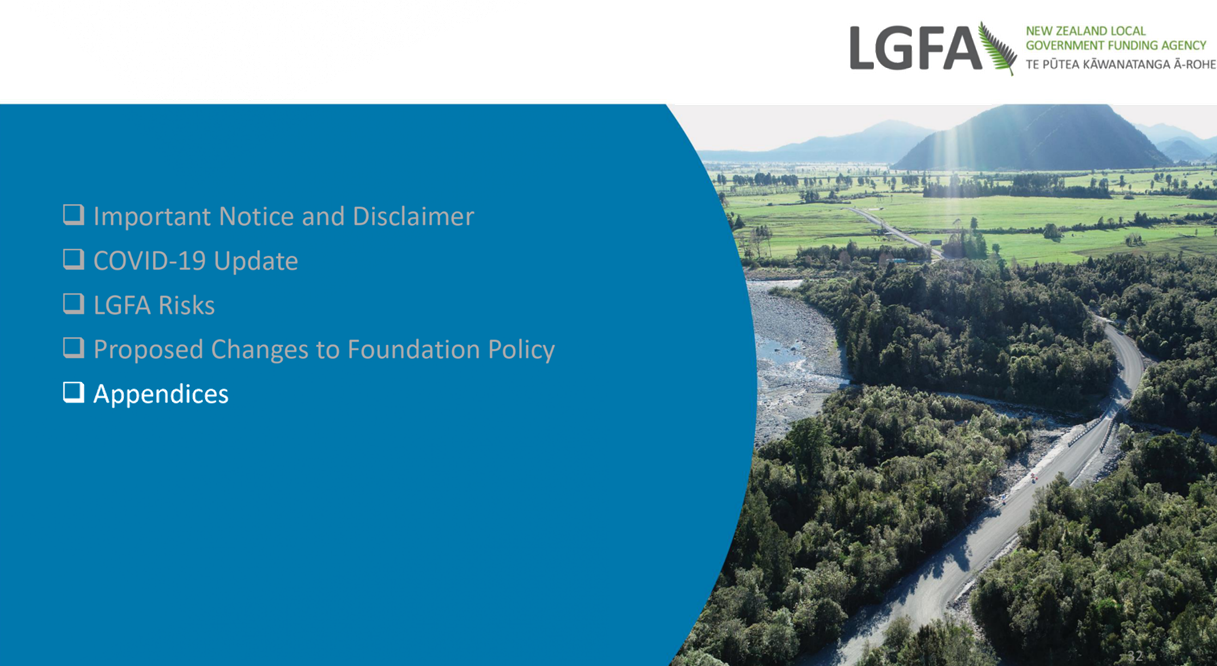
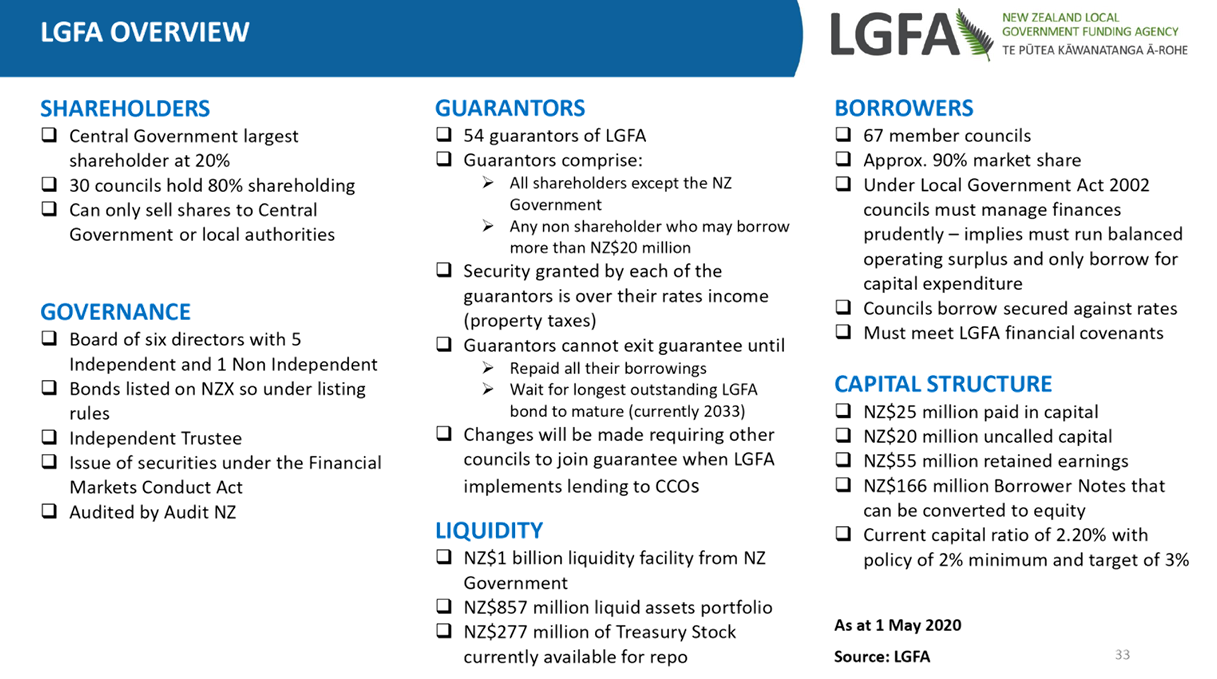
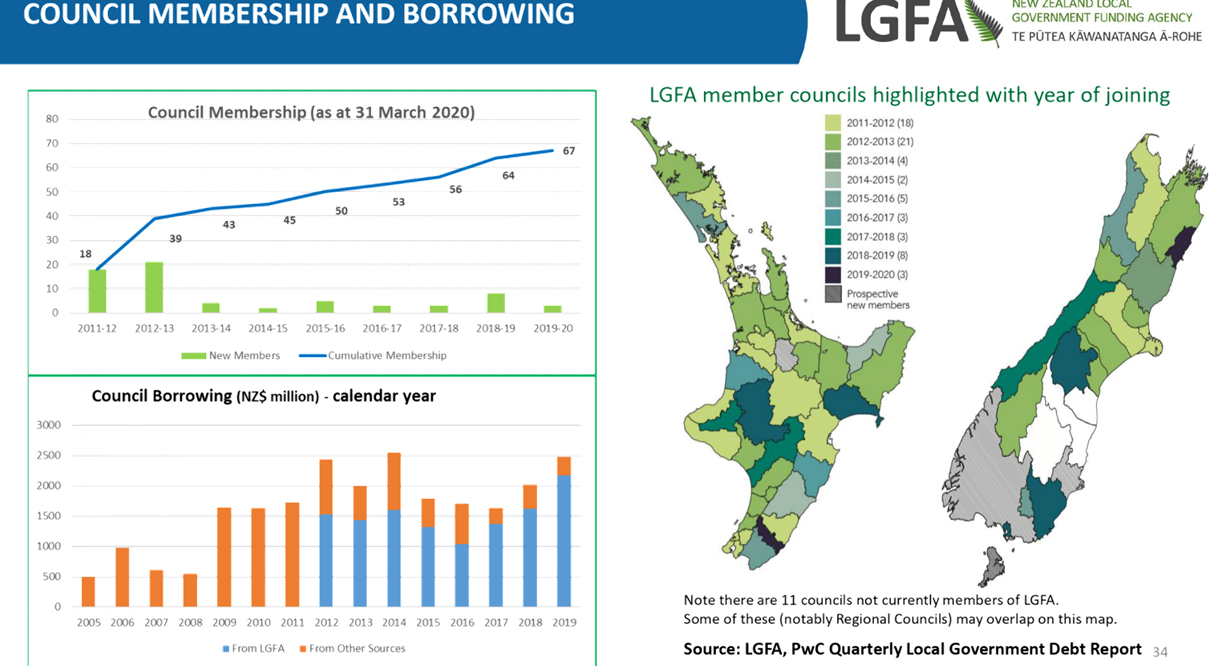
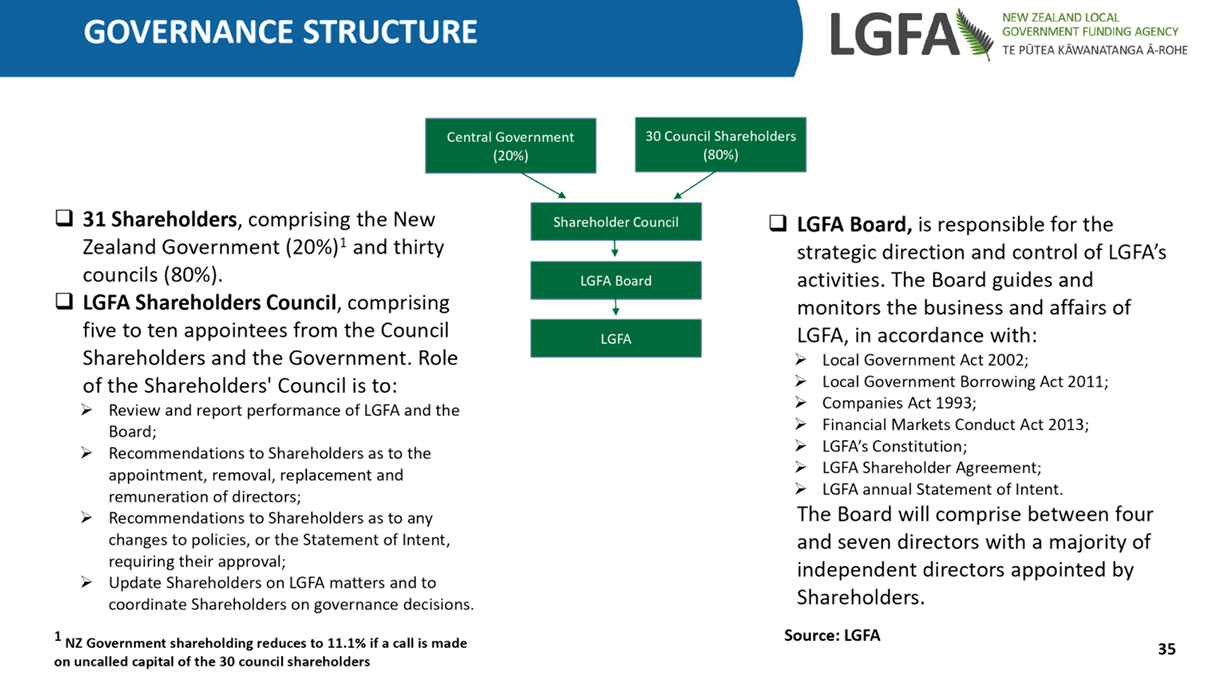
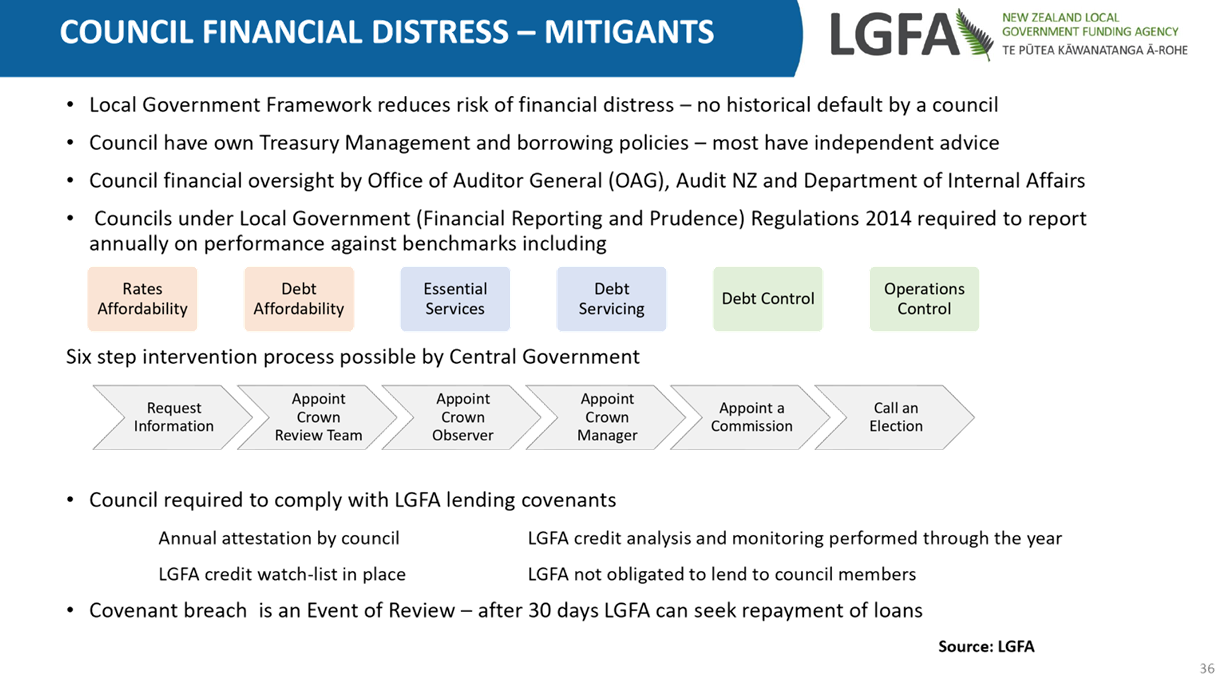
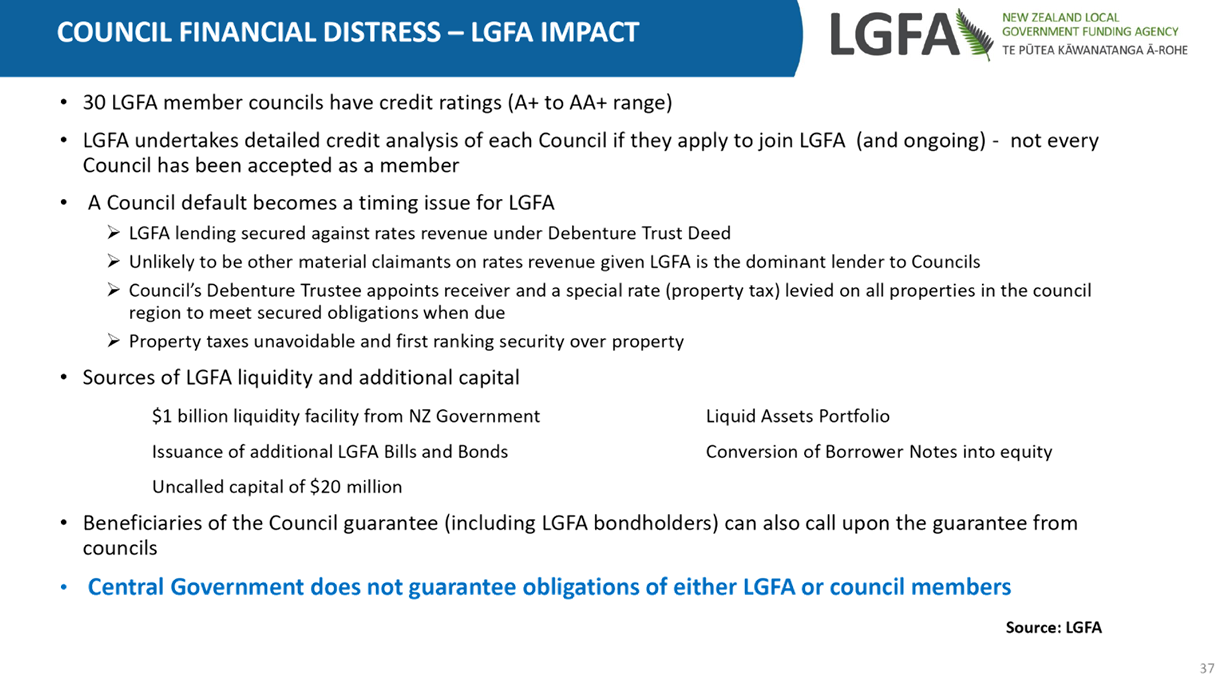
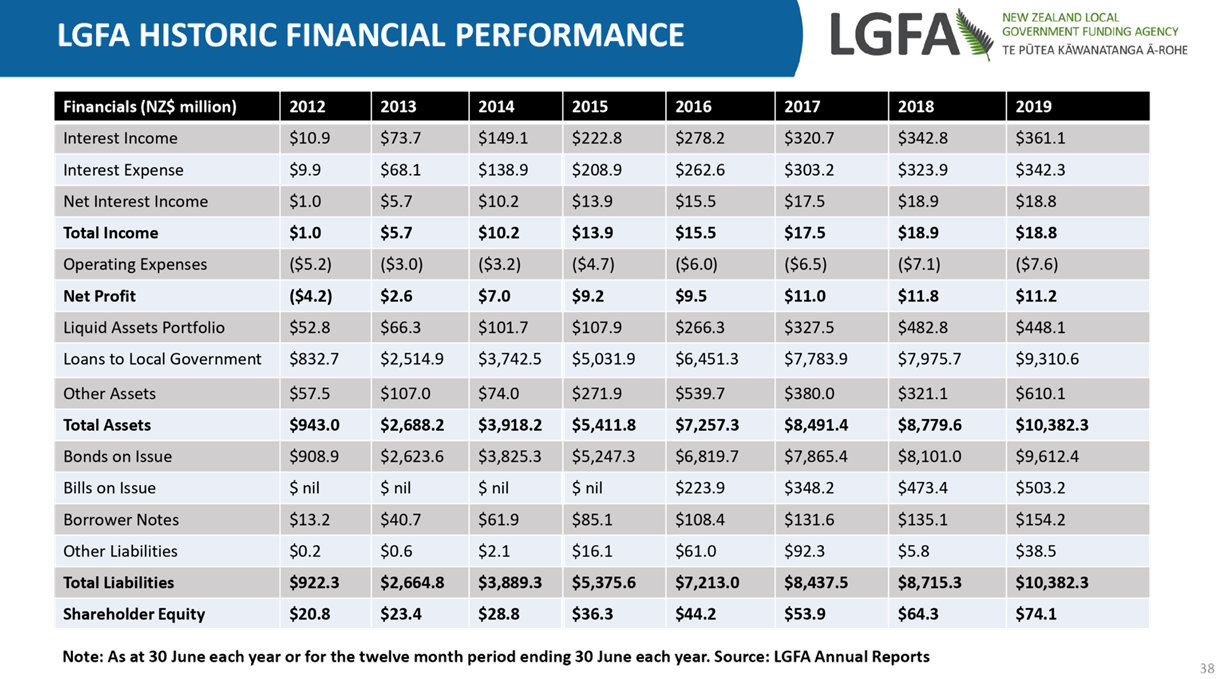
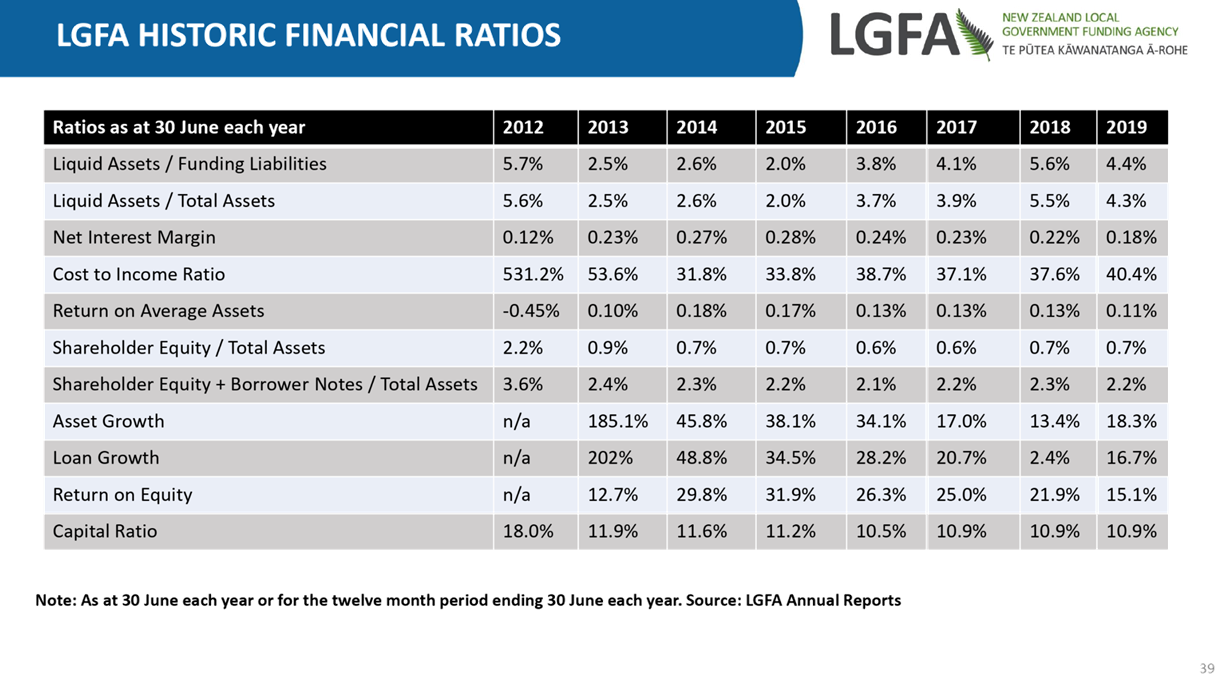
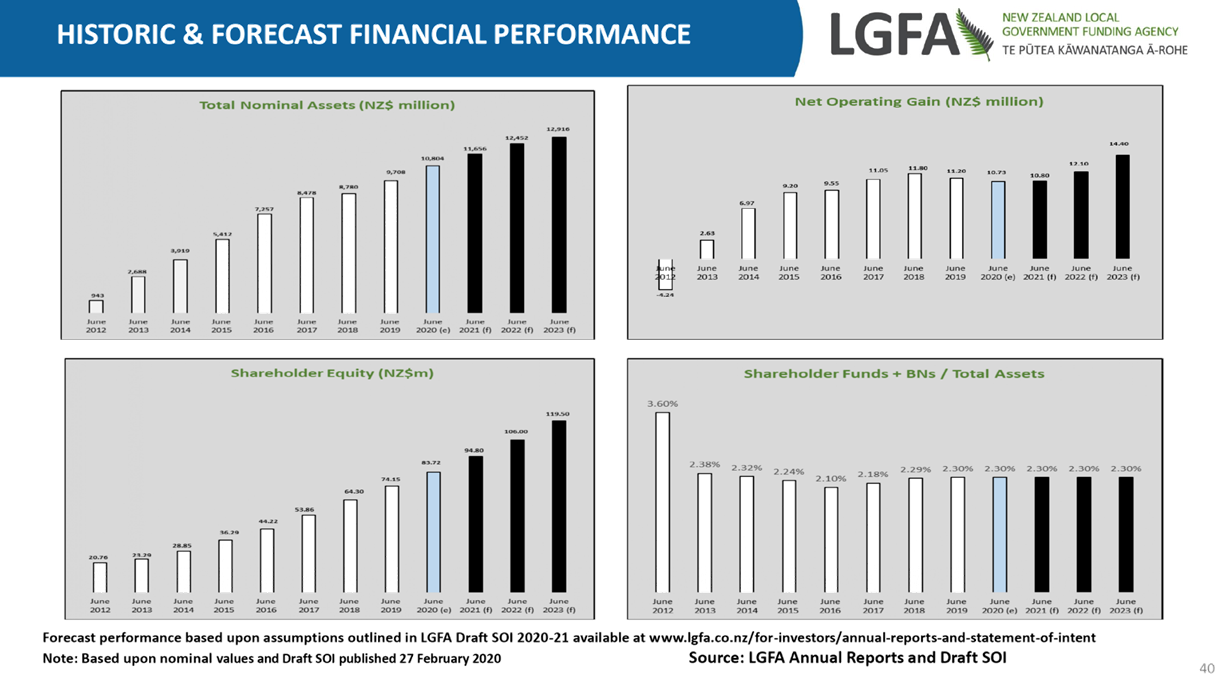
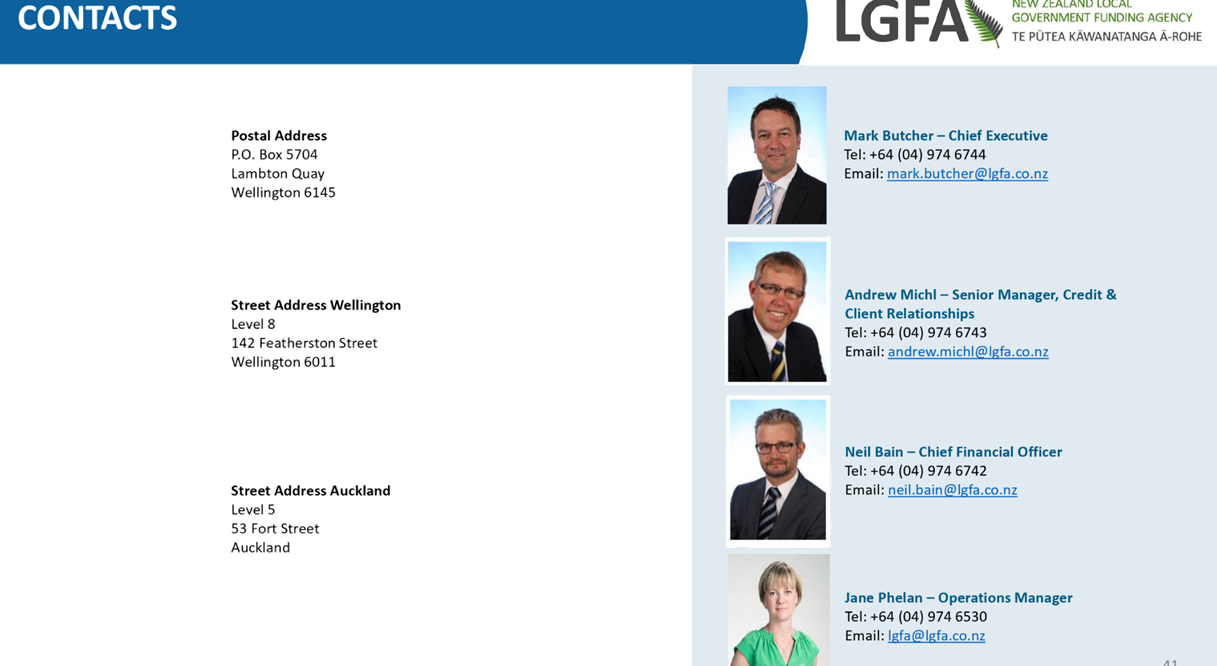
9 Public
Excluded Session
RESOLUTION TO
EXCLUDE THE PUBLIC
|
Recommendations
That the public be excluded from the following parts of
the proceedings of this meeting.
The general subject matter of each matter to be considered
while the public is excluded, the reason for passing this resolution in
relation to each matter, and the specific grounds under section 48 of the
Local Government Official Information and Meetings Act 1987 for the passing
of this resolution are as follows:
|
General subject of each matter to be considered
|
Reason for passing this resolution in relation to
each matter
|
Ground(s) under section 48 for the passing of this
resolution
|
|
9.1 - COVID-19 Pandemic - Risk
Register
|
s7(2)(b)(ii) - the withholding of the information
is necessary to protect information where the making available of the information
would be likely unreasonably to prejudice the commercial position of the
person who supplied or who is the subject of the information
s7(2)(i) - the withholding of the information is
necessary to enable Council to carry on, without prejudice or disadvantage,
negotiations (including commercial and industrial negotiations)
|
s48(1)(a) - the public conduct of the relevant
part of the proceedings of the meeting would be likely to result in the
disclosure of information for which good reason for withholding would exist
under section 6 or section 7
|
|
9.2 - Litigation Report
|
s7(2)(a) - the withholding of the information is
necessary to protect the privacy of natural persons, including that of
deceased natural persons
s7(2)(g) - the withholding of the information is
necessary to maintain legal professional privilege
s7(2)(i) - the withholding of the information is
necessary to enable Council to carry on, without prejudice or disadvantage,
negotiations (including commercial and industrial negotiations)
|
s48(1)(a) - the public conduct of the relevant
part of the proceedings of the meeting would be likely to result in the
disclosure of information for which good reason for withholding would exist
under section 6 or section 7
|
|
9.3 - Organisational change -
Presentation (verbal) by Mr Michael Smith, Chairman, Bay Venues Limited
|
s7(2)(a) - the withholding of the information is
necessary to protect the privacy of natural persons, including that of
deceased natural persons
|
s48(1)(a) - the public conduct of the relevant
part of the proceedings of the meeting would be likely to result in the
disclosure of information for which good reason for withholding would exist
under section 6 or section 7
|
|


















































































































